40 Wild Animals in the UK [Wildlife in Britain]
Want to know more about the wildlife in the UK?
Discover 40 wild animals in the UK in this post, as well as interesting facts about them. 🇬🇧
Learn All About British Animals
Ready to learn all about British animals?
I’ve always been fascinated by animals and by how they can be so different from one country to another. In this guide, we’ll focus on the many animals the United Kingdom has on the land, in the sky, and underwater.
I’ve split the guide into 4 categories:
- Native animals from the United Kingdom
- Endangered animals of the United Kingdom
- What is the national animal of the United Kingdom?
- How many animals native to the UK?
Let’s dive in right away with our first category!
Native Animals from the United Kingdom
The United Kingdom is a European country located in the northwestern part of the continent, surrounded by the Atlantic Ocean, and the English Channel, as well as the Celtic, the North, and the Irish Seas. It is made of England, Northern Ireland, Scotland and Wales, used to be the largest empire of all time in the 1920s, has the world’s sixth-largest economy by nominal GDP, and it had been a member of the European Union from 1973 to 2020 and Brexit. Its capital and largest city is London, which counts more than 9,002,000 inhabitants (but more than 14,257,000 if you include the metropolitan area).
An interesting part of the country that I wanted to tackle is its wildlife. In light of that, I have listed the best of it, and I hope you will love learning what animals live in the United Kingdom.
Here’s the United Kingdom animals list.
1. Red deer
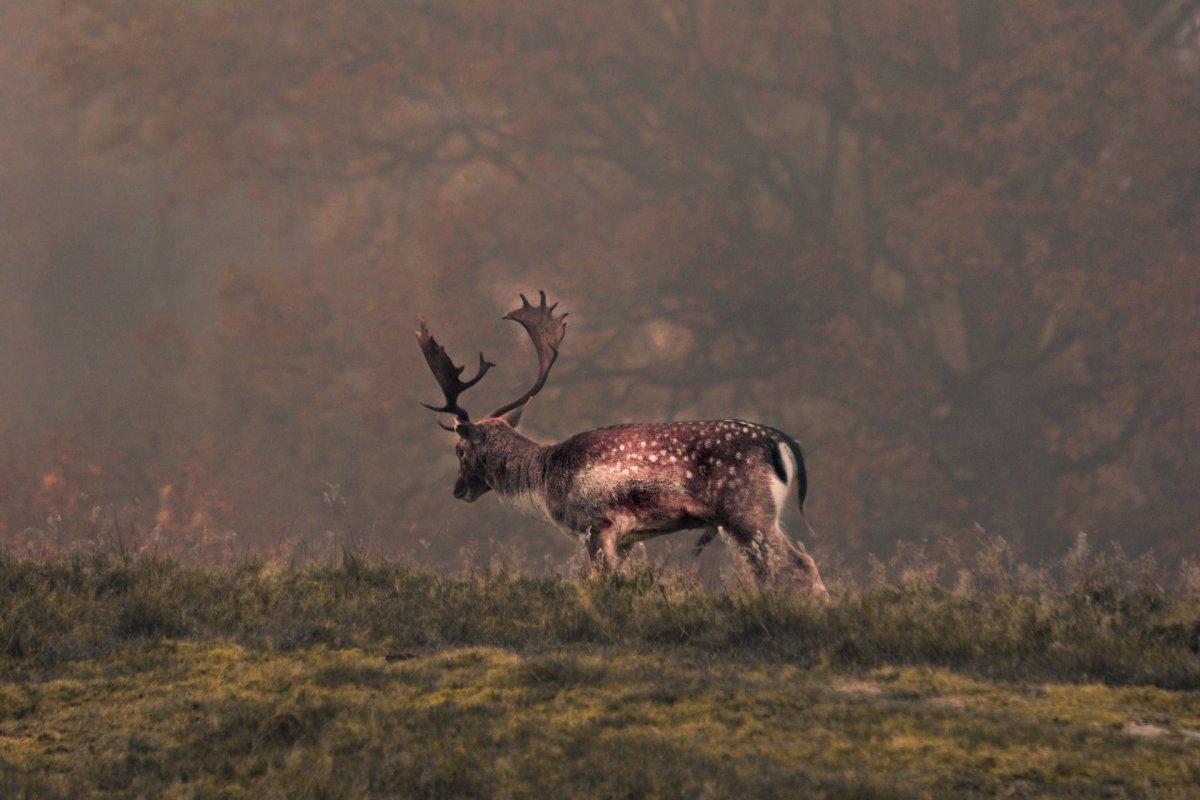
- Name: Red deer
- Scientific name: Cervus elaphus
- Conservation status:
The red deer is the largest native mammalian species you will find in the United Kingdom. It is very widespread throughout the countries and all of the member states, and it has historically long been a coveted trophy for hunters, not only for the decorative antlers of the animal but also for its tasty meat, known as venison.
While males are called harts or stags, females are known as hinds.
2. European hedgehog
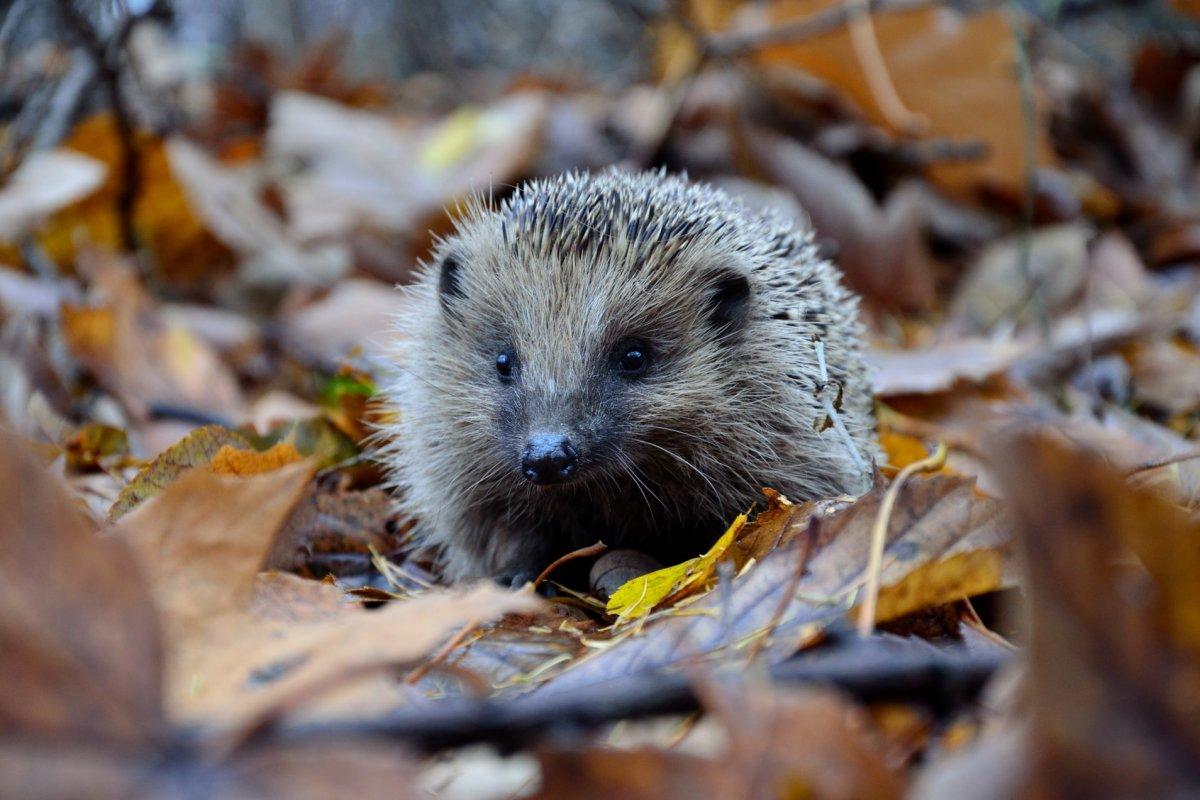
- Name: European hedgehog
- Scientific name: Erinaceus europaeus
- Conservation status:
The European hedgehog, also known as the common hedgehog or the West European hedgehog, is a species of hedgehog native to much of continental Europe, as well as the United Kingdom.
If you are surprised by the conservation status of the European hedgehog, which you’d probably imagine as a common and widespread animal, it is only in the United Kingdom that it has suffered from drastic declines; in the rest of the world, the European hedgehog is considered of least concern.
3. European badger
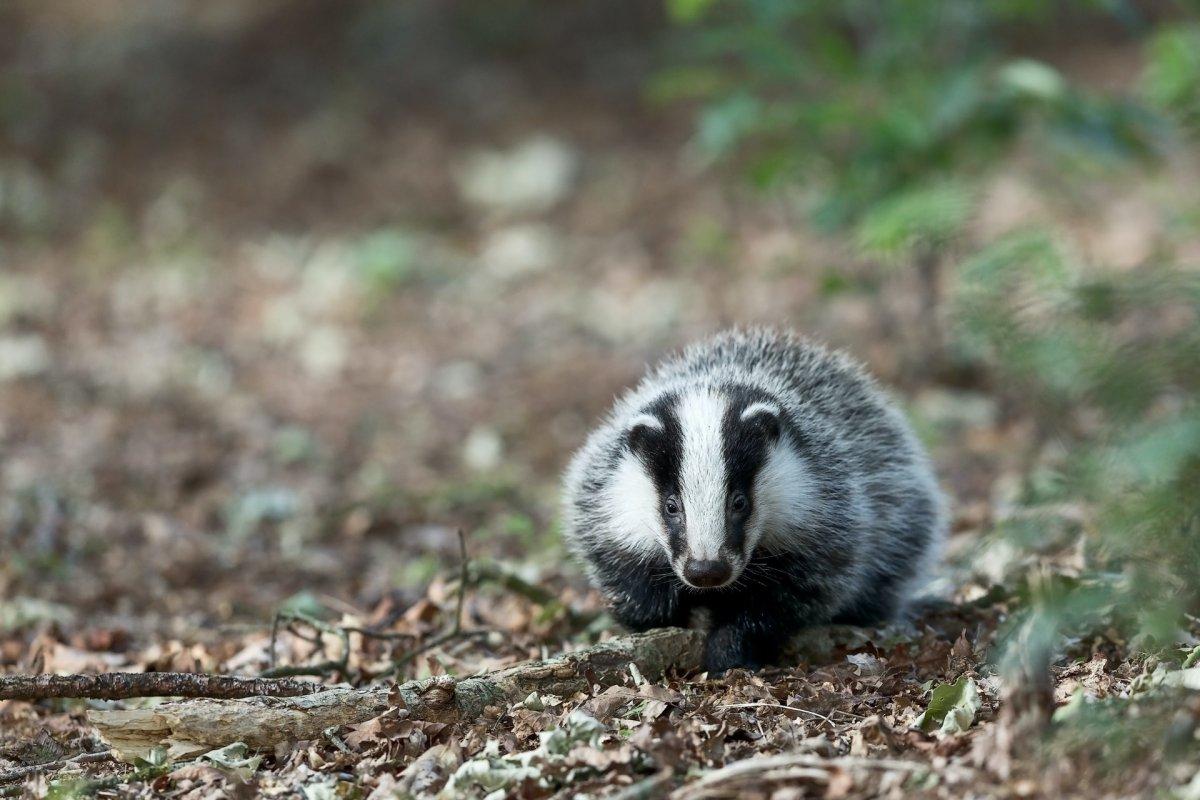
- Name: European badger
- Scientific name: Meles meles
- Conservation status:
The European badger, also known as the badger, is a species of mustelid native to almost the entirety of Europe. It has a very wide range and large numbers and is thus considered of least concern.
However, although there are about 300,000 European badgers in the United Kingdom, the country is known for the culling of a lot of individuals, in hopes to control rabies and bovine tuberculosis.
4. Mountain hare
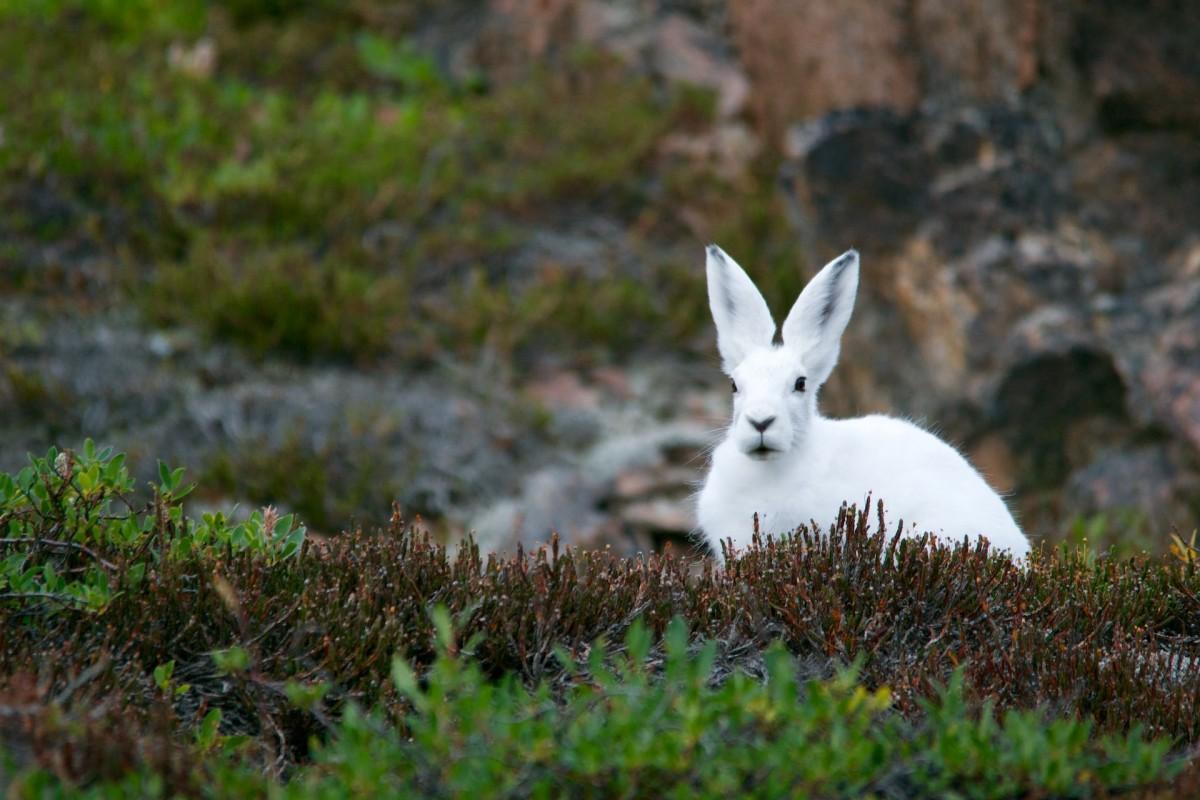
- Name: Mountain hare
- Scientific name: Lepus timidus
- Conservation status:
The mountain hare, also known as the Irish hare, the alpine hare, the tundra hare, the blue hare, the white hare, the snow hare, or the variable hare, is a species of hare native to mountainous and polar habitats.
It can be found around the Alps, the British Isles, Scandinavia, and much of northern Asia, and greatly varies in color depending on its environment.
5. Common pipistrelle
- Name: Common pipistrelle
- Scientific name: Pipistrellus pipistrellus
- Conservation status:
The common pipistrelle is the most common species of bat in the United Kingdom. It is a small microbat with a very large range, being found from much of Europe to southern Asia and northern Africa.
In the United Kingdom, the common pipistrelle has been suffering declines since 1979 due to agriculture intensification. Because of this, the government launched a Species Action Plan in hopes to protect this animal.
6. Golden eagle

- Name: Golden eagle
- Scientific name: Aquila chrysaetos
- Conservation status:
The golden eagle is a large species of bird of prey, and the most widely distributed of all eagles, being found throughout most of the Northern Hemisphere. In the United Kingdom, it is a breeding, resident species and can be found there throughout the year.
This bird has been used in falconry for centuries and has always been highly regarded.
7. Barred grass snake
- Name: Barred grass snake
- Scientific name: Natrix helvetica
- Conservation status:
The barred grass snake is a nonvenomous species of snake native to Western Europe: it can be found in the southern half of the United Kingdom, as well as in France, Italy, and Belgium, among other countries.
This snake usually lives in and close to water, and it primarily feeds on amphibians such as frogs and toads. It spends a large part of the year hibernating, throughout all the coldest months.
8. Kemp’s ridley sea turtle
- Name: Kemp’s ridley sea turtle
- Scientific name: Lepidochelys kempii
- Conservation status:
Kemp’s ridley sea turtle, also known as the Atlantic ridley sea turtle, is the rarest species of sea turtle in the world. The majority of the remaining individuals live in the Gulf of Mexico, but juveniles often venture into the Atlantic Ocean and migrate as far as western Europe and northwestern Africa.
This sea turtle feeds on crustaceans, mollusks and jellyfish, and terribly suffers from pollution, entanglement in shrimping nets, and habitat loss.
9. Barn owl
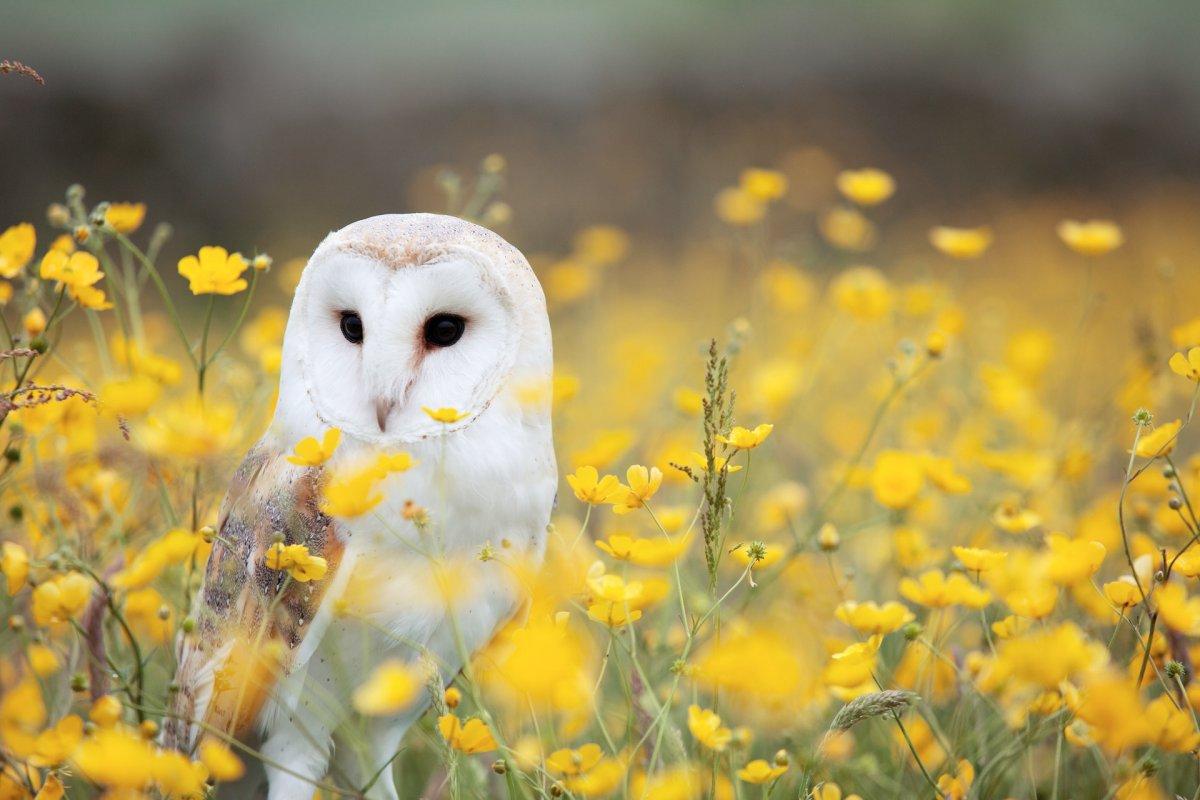
- Name: Barn owl
- Scientific name: Tyto alba
- Conservation status:
The barn owl is the most common and widespread species of owl: it lives on almost every continent and can be found anywhere except for the polar or desert environments.
While majorly a nocturnal hunter, like most other owls, it sometimes hunts by day on the British Isles. The reason for that might be that the previous night had been too wet, making hunting too difficult.
10. Red fox
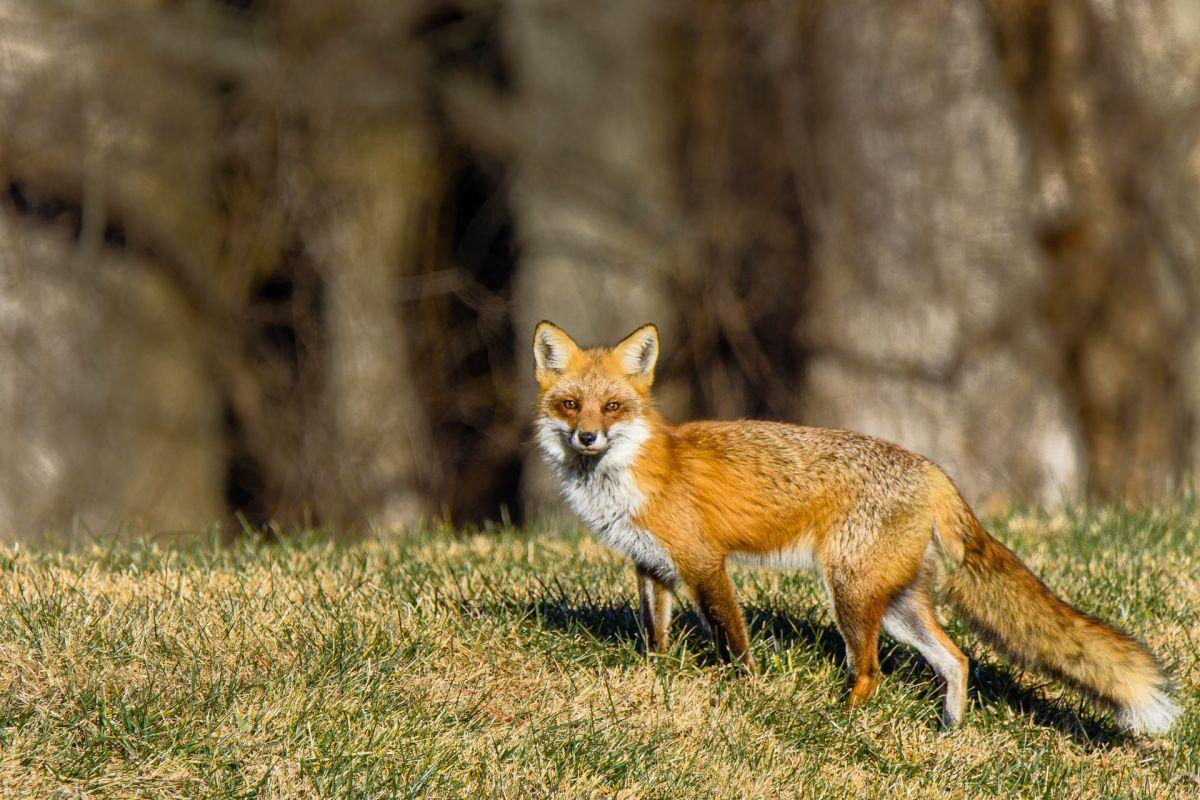
- Name: Red fox
- Scientific name: Vulpes vulpes
- Conservation status:
The red fox is not only the most common and widespread species of fox but also of the entire order Carnivora! It can be found in the entire Northern Hemisphere and is a highly successful species, thanks to its ability to thrive under human expansion.
When it comes to feeding, the red fox is omnivorous and can eat practically anything, from small rodents, birds, porcupines, raccoons, ungulates, fruit, grasses, tubers, and berries.
11. Gray seal
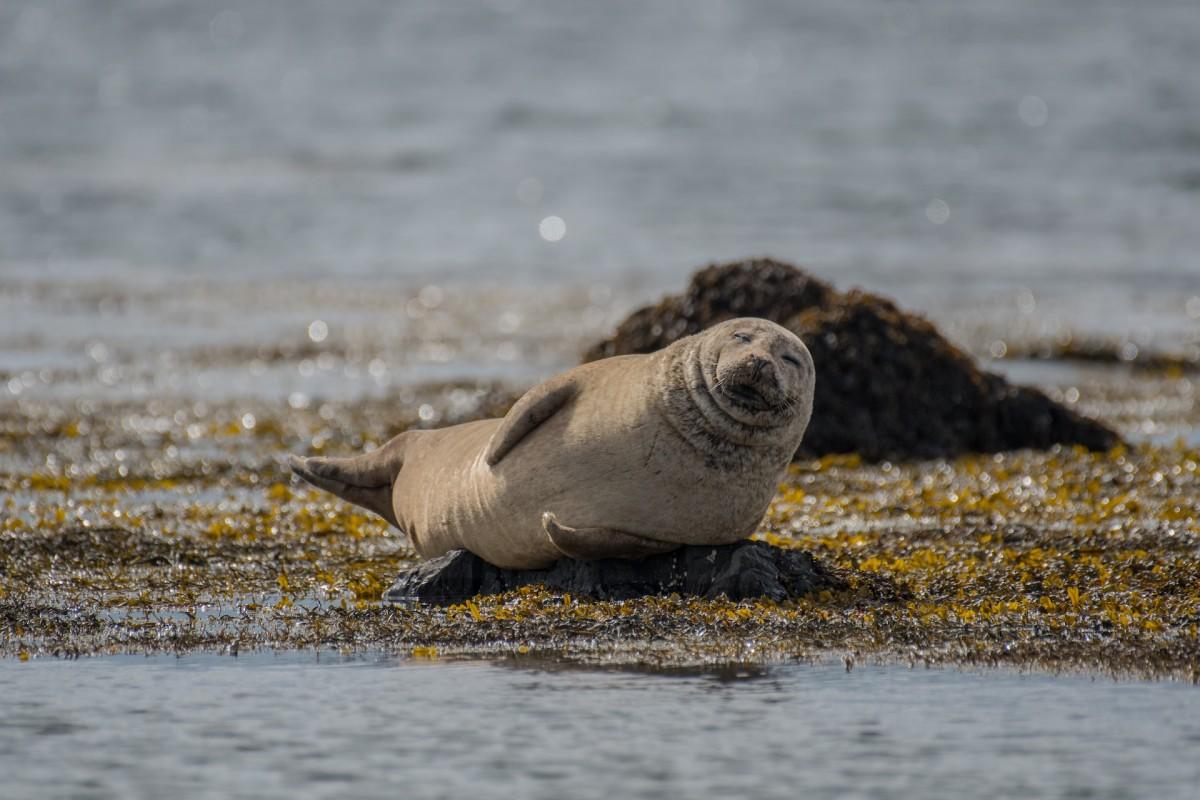
- Name: Gray seal
- Scientific name: Halichoerus grypus
- Conservation status:
The gray seal, also known as the Atlantic seal or the horsehead seal, is a species of seal native to both shores of the northern Atlantic Ocean. In the United Kingdom, the gray seal breeds in multiple colonies around the coastline. On the Farne Islands, off the Northumberland Coast, is a large colony of about 6,000 animals.
During the winter, gray seals often come ashore and rest on rocks.
12. Eurasian otter
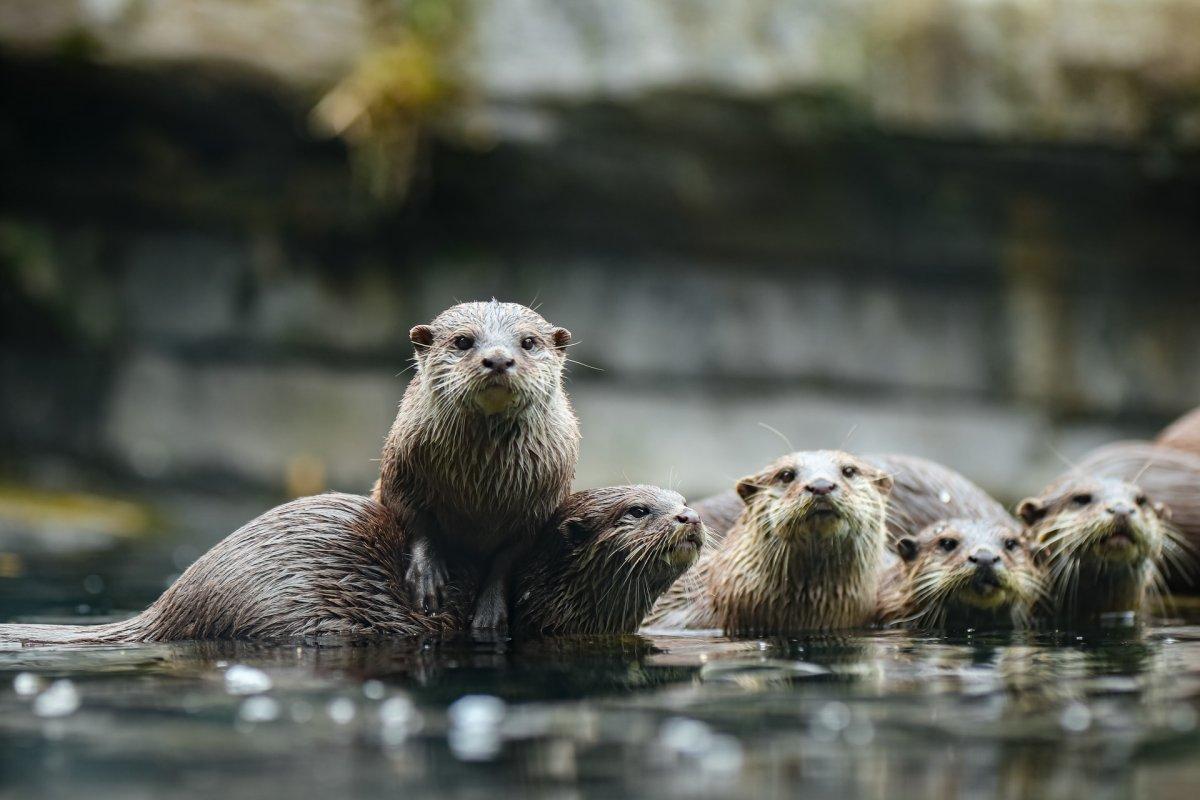
- Name: Eurasian otter
- Scientific name: Lutra lutra
- Conservation status:
The Eurasian otter, also known as the river otter, the common otter, or the Old World otter, is a semi-aquatic species of mustelid native to much of Eurasia. It inhabits the coasts and waterways of the United Kingdom and primarily feeds on fish.
Depending on the area of its range, the Eurasian otter is either on the decline or is recovering; it mainly suffers from pesticide use.
13. Common European adder
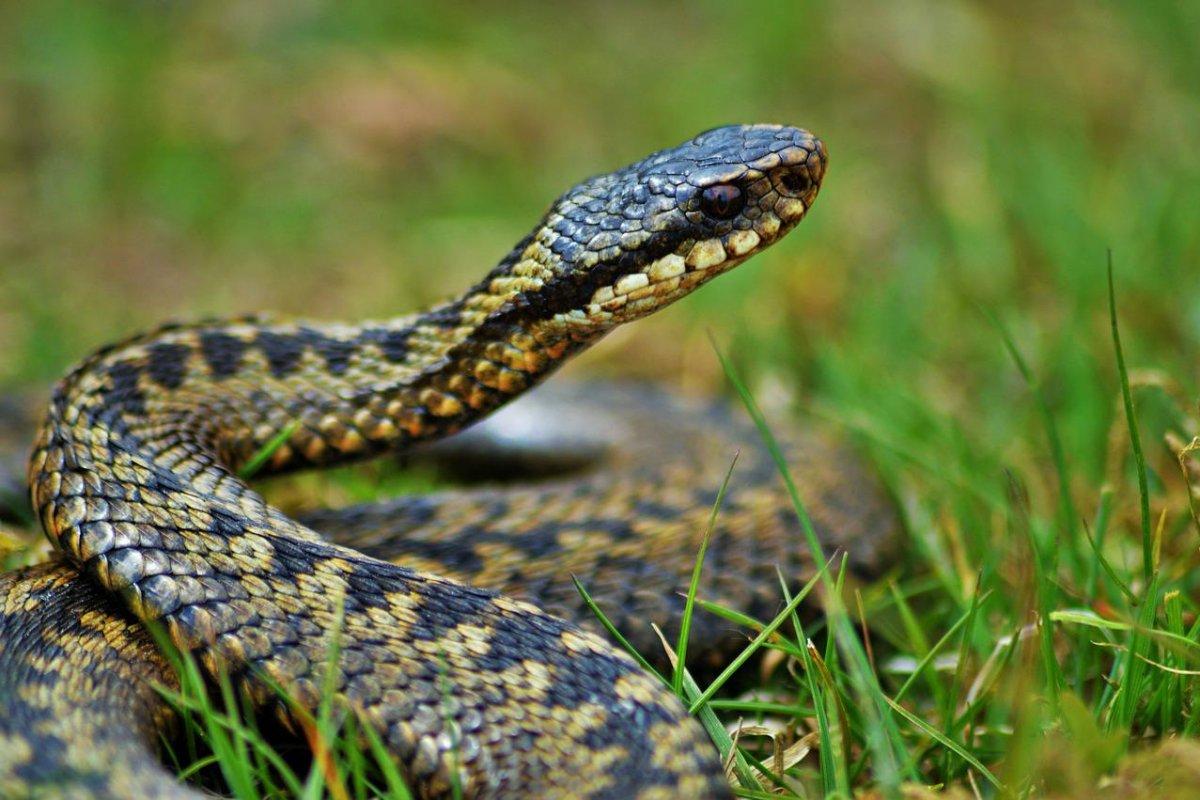
- Name: Common European adder
- Scientific name: Vipera berus
- Conservation status:
The common European adder, also known as the common viper or the common European viper, is a venomous species of snake widespread throughout central and eastern Europe, and as far as eastern Asia.
Although venomous, it is not particularly dangerous, usually only biting when provoked. Its venom is very rarely fatal, but bites are definitely painful. In the United Kingdom, the common European adder has played a significant role in local folklore.
14. Agile frog
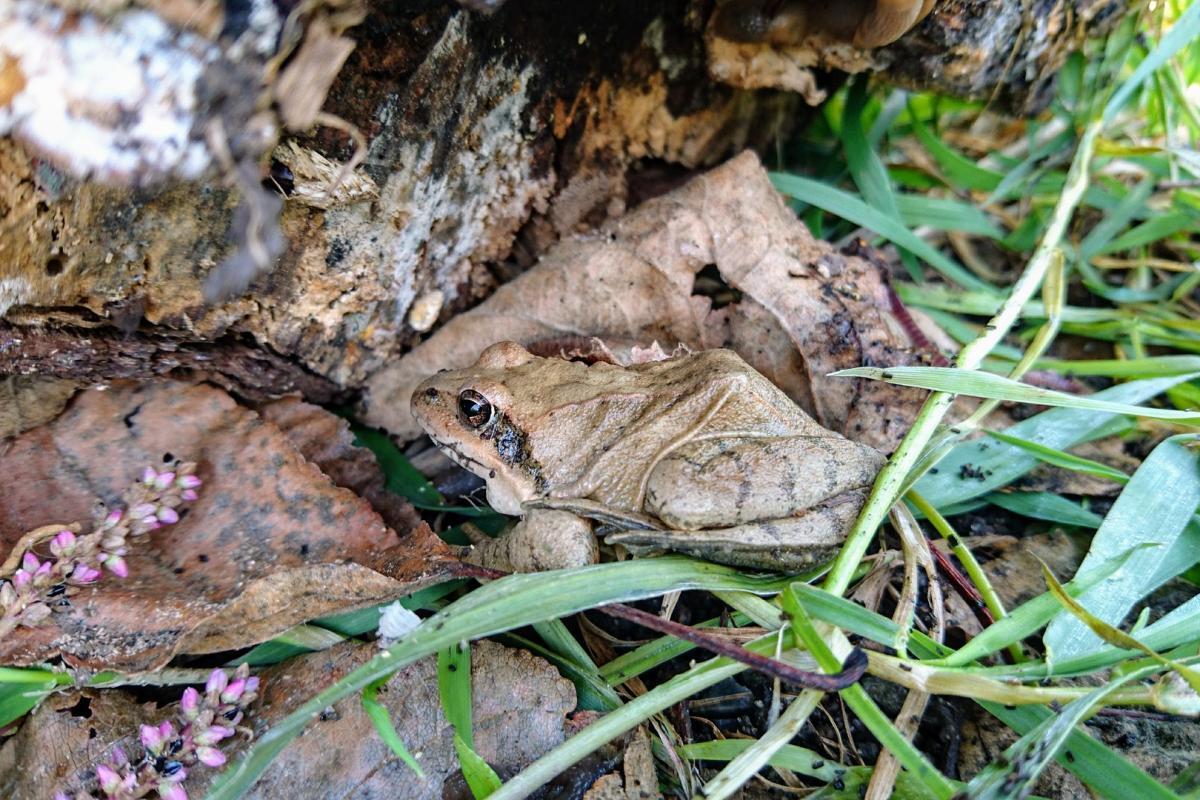
- Name: Agile frog
- Scientific name: Rana dalmatina
- Conservation status:
The agile frog is a species of frog native to continental Europe, as well as the United Kingdom. It is pretty fat and has long limbs, and very long hind legs, even for a frog, which allows it to jump further than others.
However, it can now only be found on the Island of Jersey, off the northwestern coast of France, as it does not live in the mainland United Kingdom anymore.
15. Smooth hammerhead
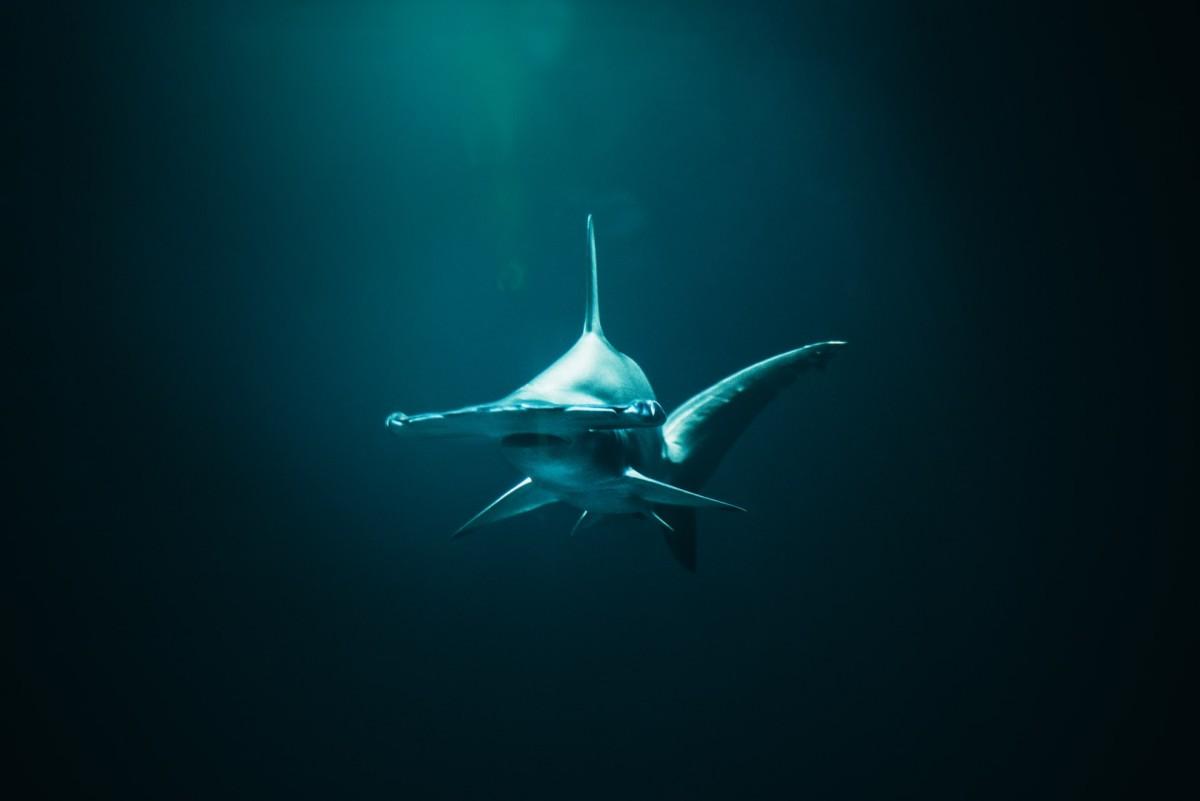
- Name: Smooth hammerhead
- Scientific name: Sphyrna zygaena
- Conservation status:
The smooth hammerhead is a species of hammerhead native to the coastlines of every ocean, as well as of the Mediterranean Sea. Unlike other species of hammerhead mostly found in tropical waters, it prefers temperate areas and migrates toward the poles for cooler temperatures.
This shark can measure up to 5 m / 16 ft long, and is thus the second-largest hammerhead shark, after the great hammerhead shark.
16. Devilfish
- Name: Devil fish
- Scientific name: Mobula mobular
- Conservation status:
The devil fish, also known as the giant devil ray, is a large species of ray native to the eastern Atlantic Ocean and the Mediterranean Sea. It is considered endangered by extinction because of fishing accidents.
This ray usually lives in deep, coastal waters, where it can live for about 20 years. Interestingly enough, the devil fish is an ovoviviparous species, which means that eggs hatch inside the mother’s body, and young emerge later.
17. Wild boar
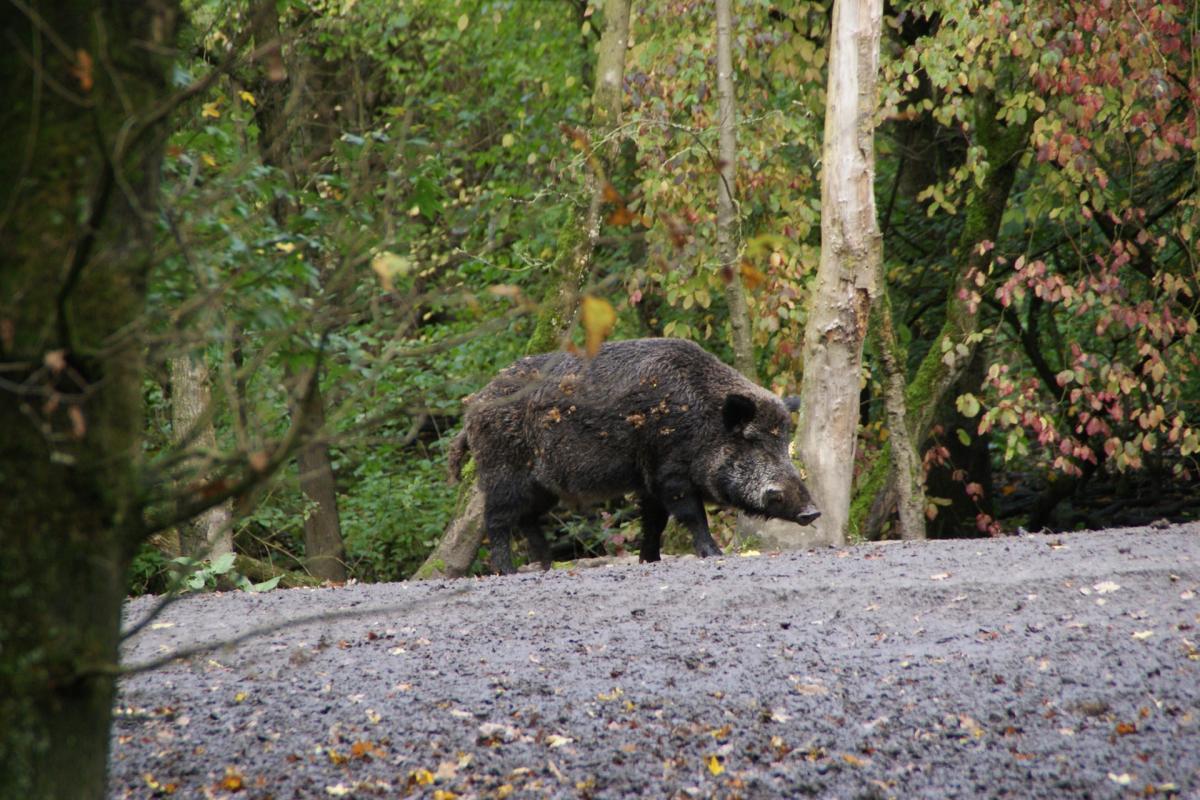
- Name: Wild boar
- Scientific name: Sus scrofa
- Conservation status:
The wild boar, also known as the wild pig, the wild swine, or the common wild pig, is a species of mammal native to much of Eurasia and introduced in the Americas and Oceania. It is one of the most common and widespread animals in all of Europe and has long been an important symbol, especially for Germanic people.
In the United Kingdom, most established wild boar populations come from escaped individuals, which ran away from farms.
18. Orca
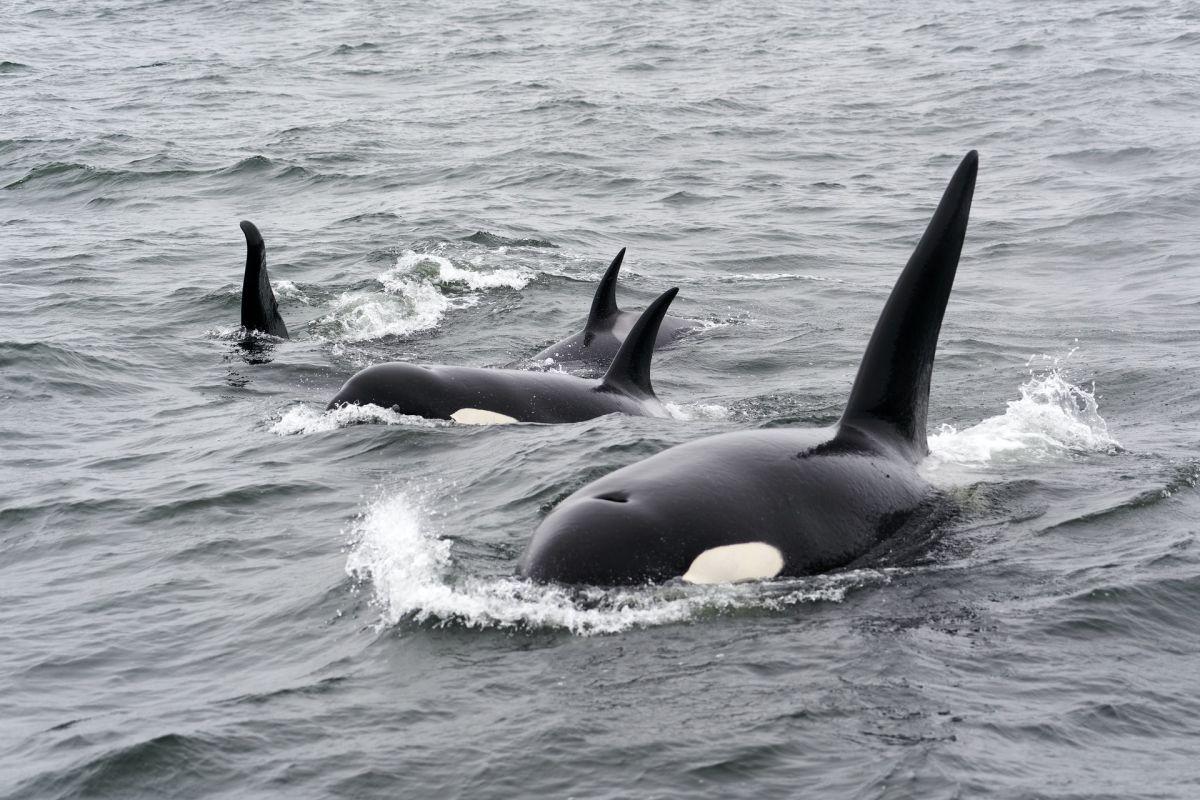
- Name: Orca
- Scientific name: Orcinus orca
- Conservation status:
The orca, widely known as the killer whale, is a large species of toothed whale with a worldwide distribution, being found in all oceans and in a variety of habitats. In the United Kingdom, it is known to occasionally prey on gray seals.
Due to its incredibly wide range, it is particularly difficult to estimate the global population of the orca, as well as its conservation status, which is why it is for now listed as data deficient.
19. Roe deer
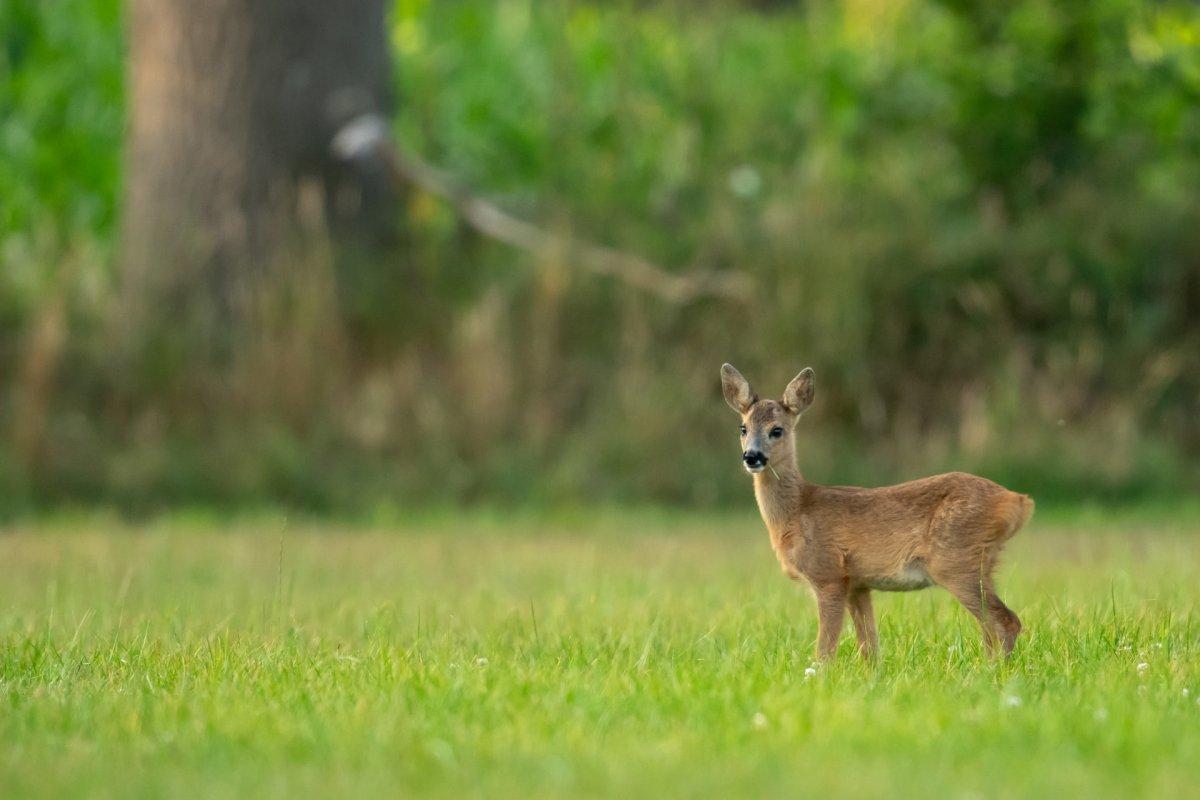
- Name: Roe deer
- Scientific name: Capreolus capreolus
- Conservation status:
The roe deer, also known as the European roe, the western roe deer, or simply the roe, is a species of deer found throughout all of mainland Europe, as well as in the United Kingdom.
The range of the roe deer has considerably expanded in the United Kingdom in the past century, mostly thanks to restrictions and a decrease in hunting, as well as increases in forests and changes in agriculture.
20. Carrion crow
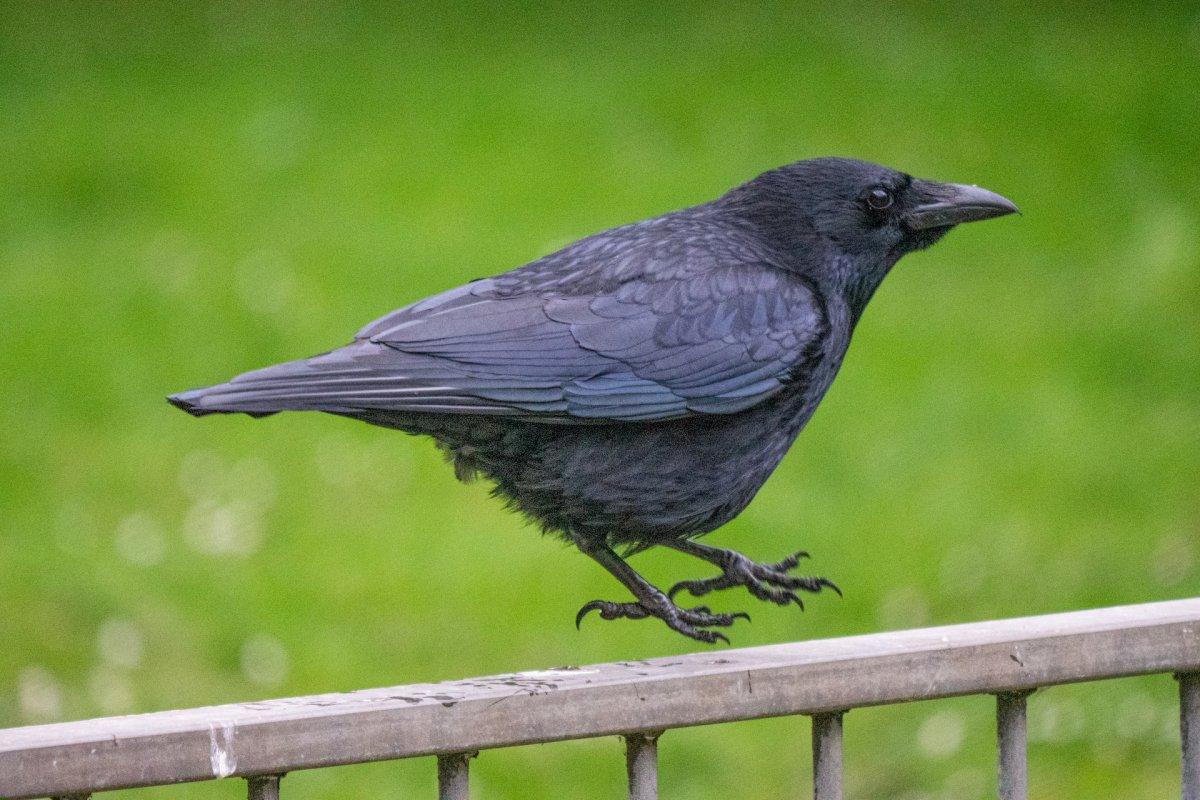
- Name: Carrion crow
- Scientific name: Corvus corone
- Conservation status:
The carrion crow is a species of passerine bird native to western Europe and far eastern Asia. It has entirely black plumage, as well as black legs, a black bill, and black feet. It is substantially smaller than the common raven and is often confused with the rook.
This crow is solitary, and is not exclusively a scavenger, despite its name, as it can also prey on insects, earthworms, fruits, seeds, and small mammals.
21. Mute swan
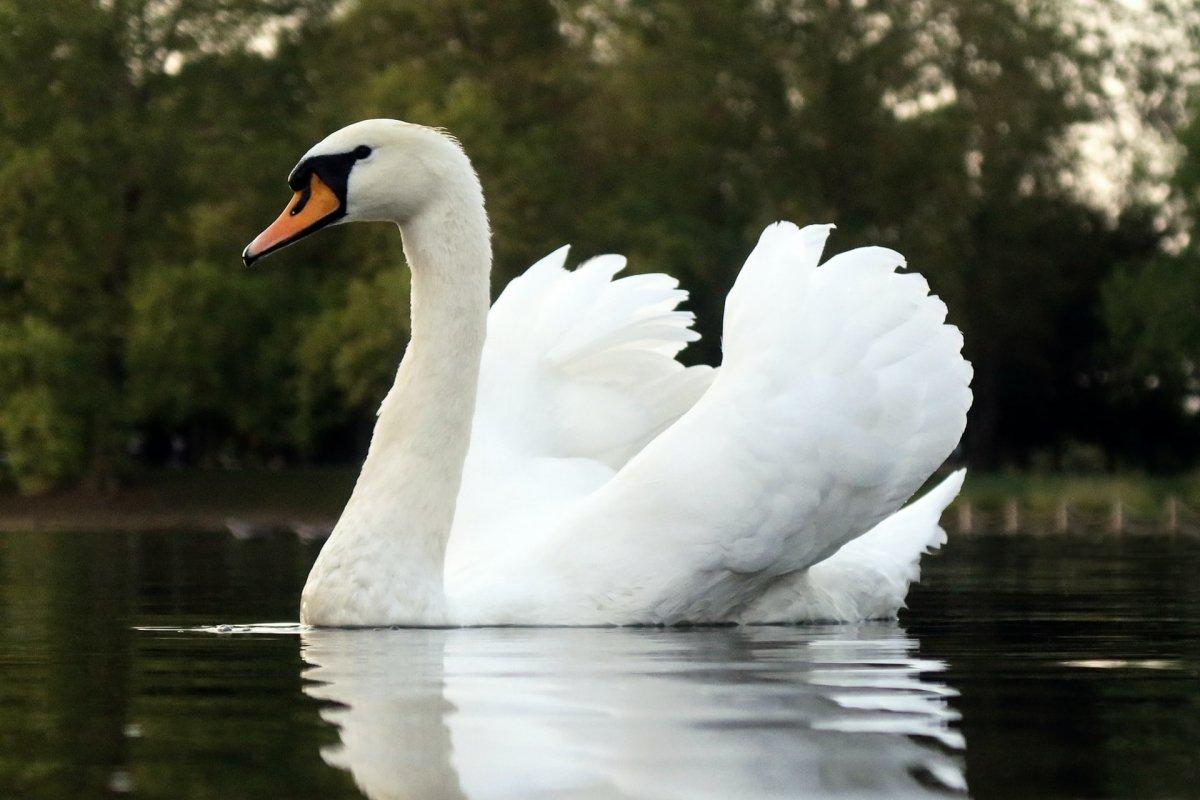
- Name: Mute swan
- Scientific name: Cygnus olor
- Conservation status:
The mute swan is a species of swan native to Europe and North America. It was named accordingly because of its tendency to be less vocal than other swans, but it is not entirely mute.
This graceful swan is one of the heaviest flying birds, reaching up to 14.3 kg / 32 lb in the United Kingdom! Also, many individuals have been domesticated for food for many centuries in the country.
22. Leatherback sea turtle
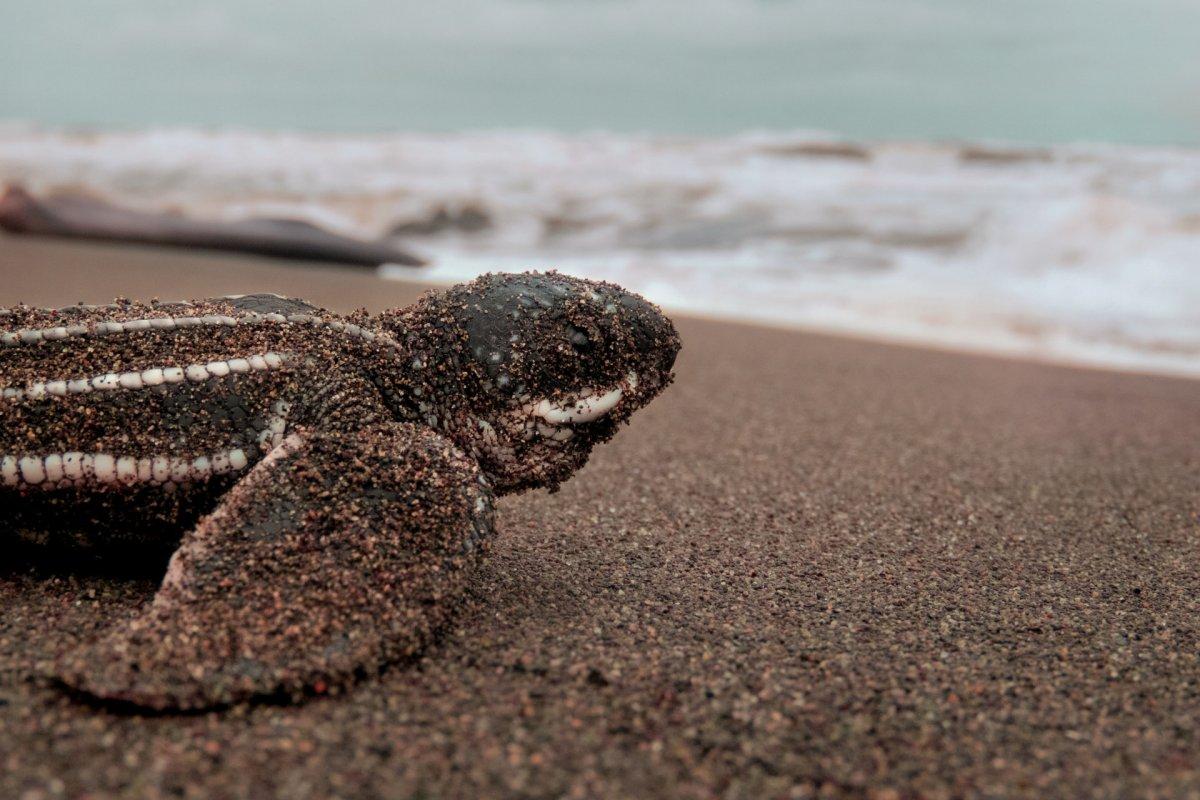
- Name: Leatherback sea turtle
- Scientific name: Dermochelys coriacea
- Conservation status:
The leatherback sea turtle, also known as the lute turtle or the leathery turtle, is one of the most impressive animals you could encounter in the United Kingdom, although it is pretty rare in the country. It is the largest of all turtles, and the heaviest reptile aside from crocodiles.
This sea turtle can be found around the world, and nests on warm, tropical beaches, but seldom comes to the United Kingdom to forage for food.
23. Northern crested newt
- Name: Northern crested newt
- Scientific name: Triturus cristatus
- Conservation status:
The northern crested newt, also known as the warty newt or the great crested newt, is a species of newt native to western Siberia, northern and central Europe, and Great Britain. It is fairly large, and has a crest all over its body, as its name suggests.
This amphibian spends most of the year on land, usually in forested areas in lowlands, before moving to aquatic breeding sites, which are mostly large, fish-free ponds, in spring.
24. Marbled electric ray
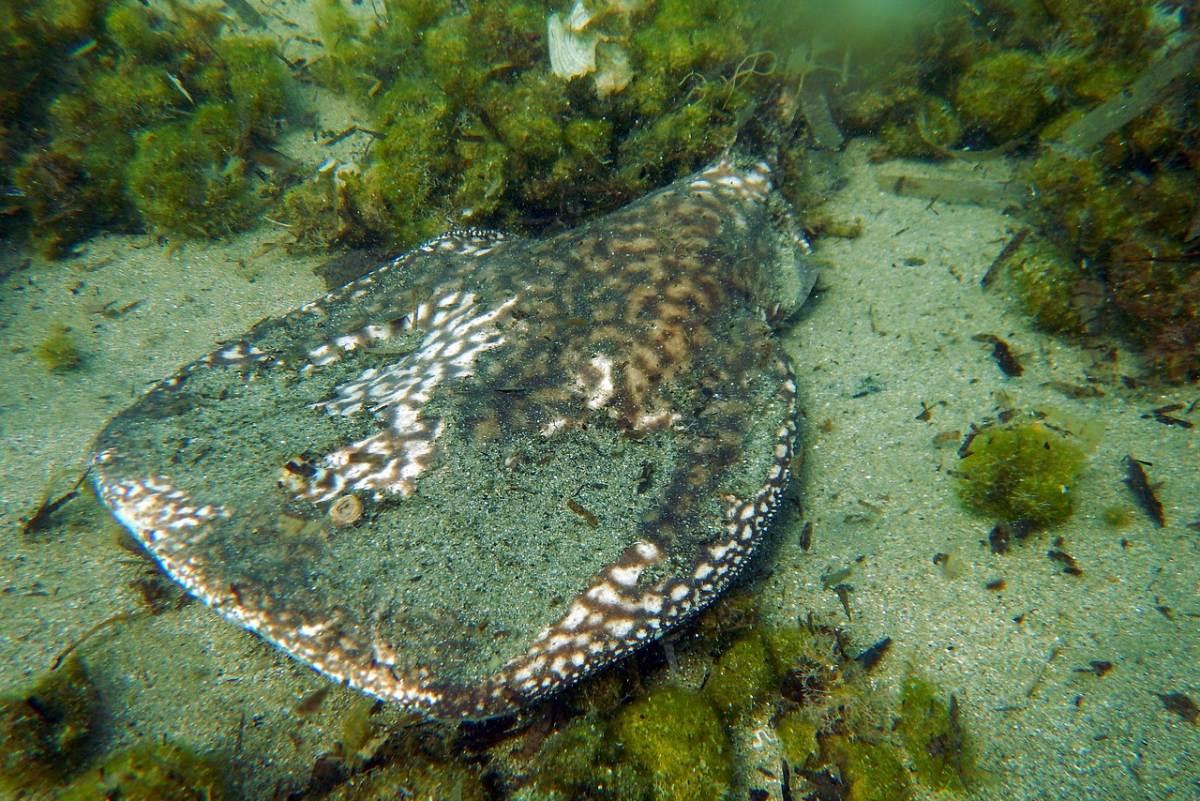
- Name: Marbled electric ray
- Scientific name: Torpedo marmorata
- Conservation status:
The marble electric ray is a species of electric ray native to the coastlines of the eastern Atlantic and the Mediterranean Sea. It inhabits the rocky reefs and seagrass beds of the United Kingdom, usually in shallow to moderately deep waters.
This fish is both nocturnal and solitary, and can often be found lying on the sea floor, almost entirely buried (except for its eyes and spiracles).
25. Common crane
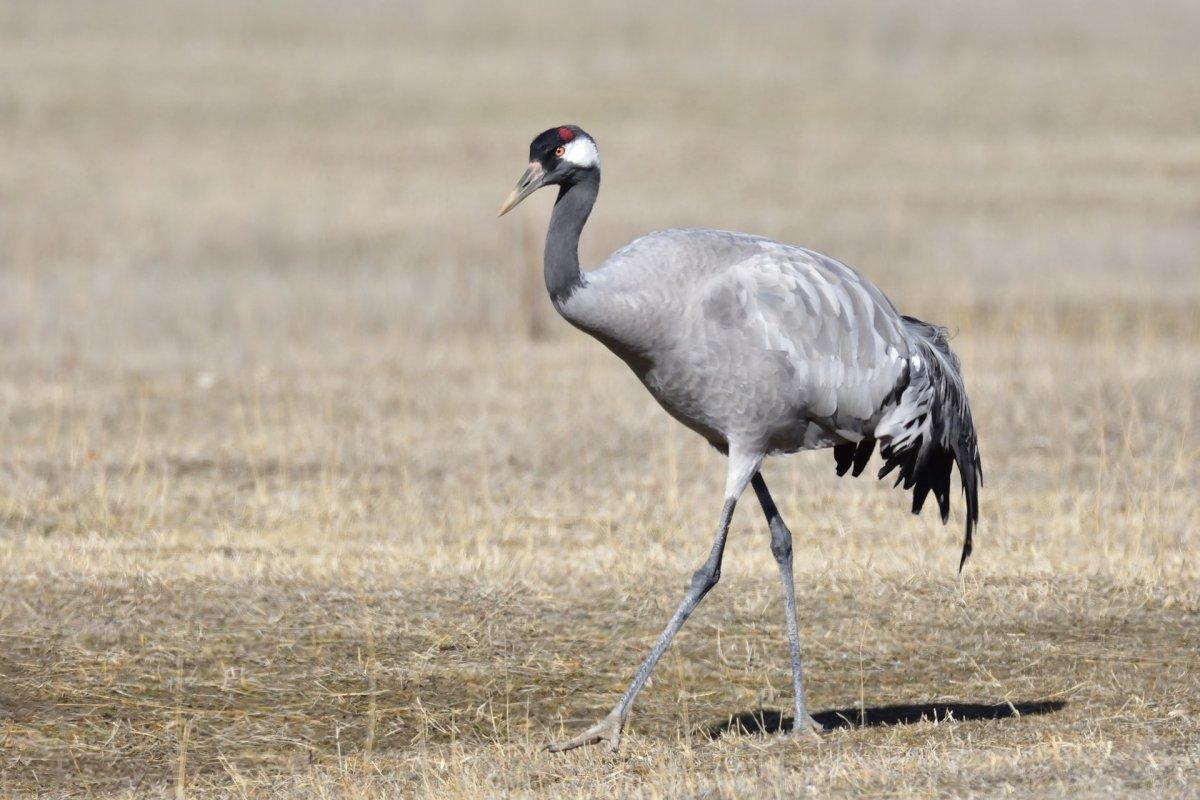
- Name: Common crane
- Scientific name: Grus grus
- Conservation status:
The common crane, also known as the Eurasian crane, is a medium-sized species of crane native to much of Europe and migrating to warmer regions in the winter, such as northeastern Africa, the Arabian Peninsula, southeastern Asia, or the Indian subcontinent.
After becoming extirpated in Great Britain in the 17th century, the common crane is now back in the country, in a small population in the Norfolk Broads. Tens of specimens have also been reintroduced into the wild, and the bird is now recovering from its loss.
26. European rabbit
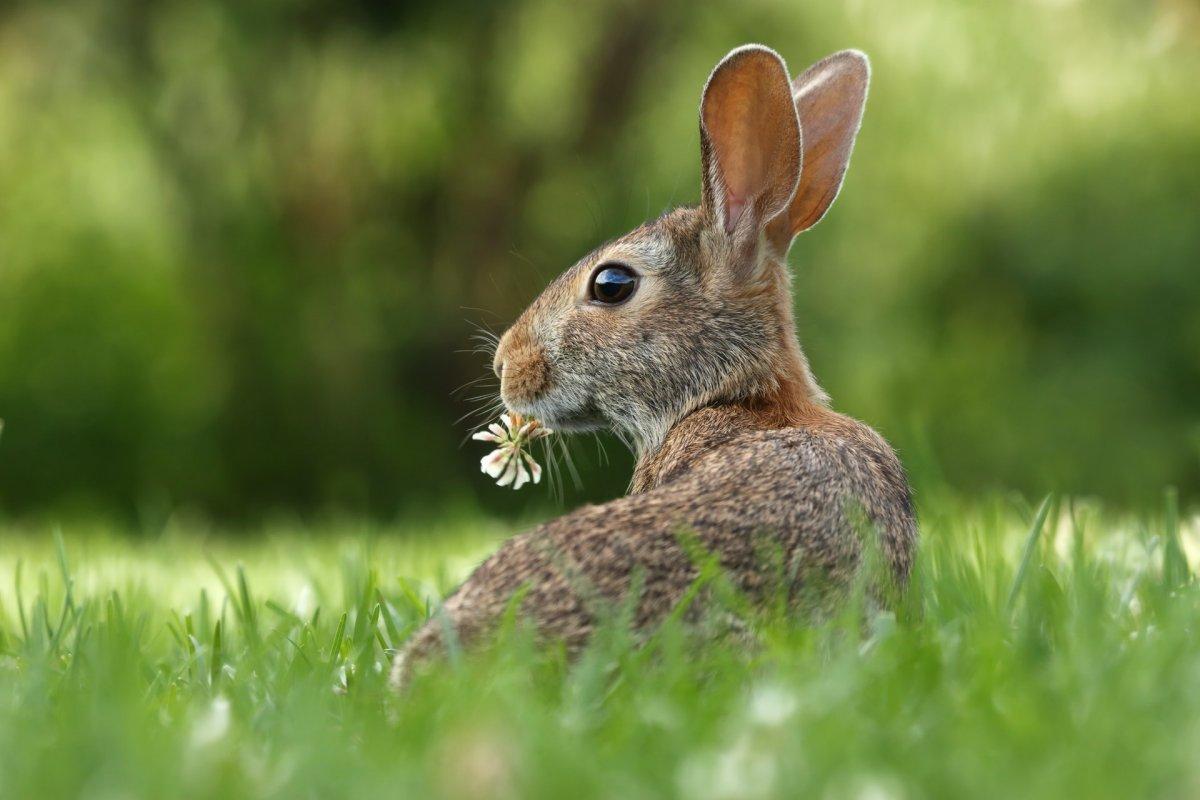
- Name: European rabbit
- Scientific name: Oryctolagus cuniculus
- Conservation status:
The European rabbit, also known as the coney, is a species of rabbit native to western France, the Iberian Peninsula, and northwestern Africa, and widely introduced in many other countries in the world, including the United Kingdom.
Now, this rabbit is pretty widespread throughout most of the islands around Britain. It was most likely introduced by the Normans in 1066, as there had been no mention of this animal prior to this date.
27. Red-necked wallaby
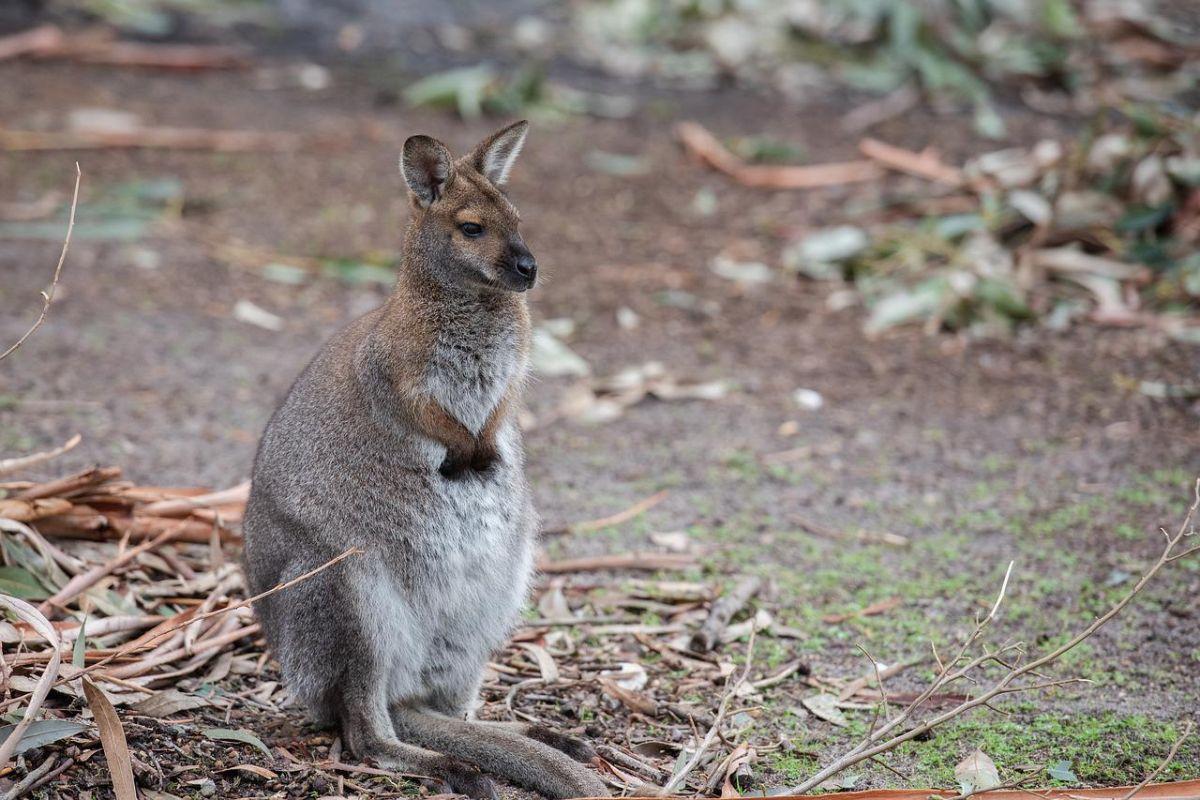
- Name: Red-necked wallaby
- Scientific name: Notamacropus rufogriseus
- Conservation status:
No, you are not dreaming, there are indeed wallabies in the United Kingdom!
The red-necked wallaby, also known as Bennett’s wallaby, is a medium-sized species of marsupial native to eastern Australia. It has been introduced to several other parts of the world, including the United Kingdom, Ireland, France, Germany, and New Zealand. These populations remain low, but they still exist!
28. Atlantic puffin
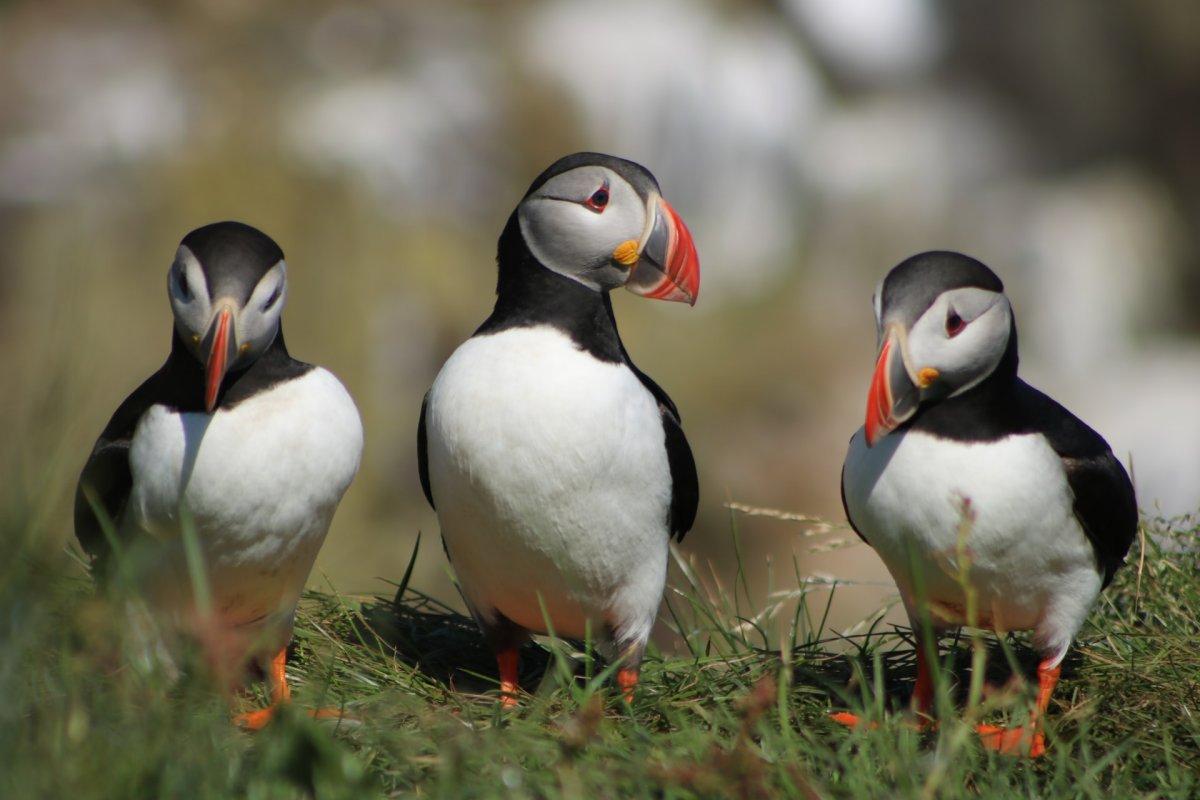
- Name: Atlantic puffin
- Scientific name: Fratercula arctica
- Conservation status:
The Atlantic puffin, also known as the common puffin, is a species of seabird native to the Atlantic Ocean. While it does not stay in the United Kingdom all around the year, it visits it in the summer and lives around the North Pole for the rest of the year.
This bird is listed as vulnerable to extinction due to many factors, such as the negative impact of tourism, hunting, pollution, and climate change.
29. White stork
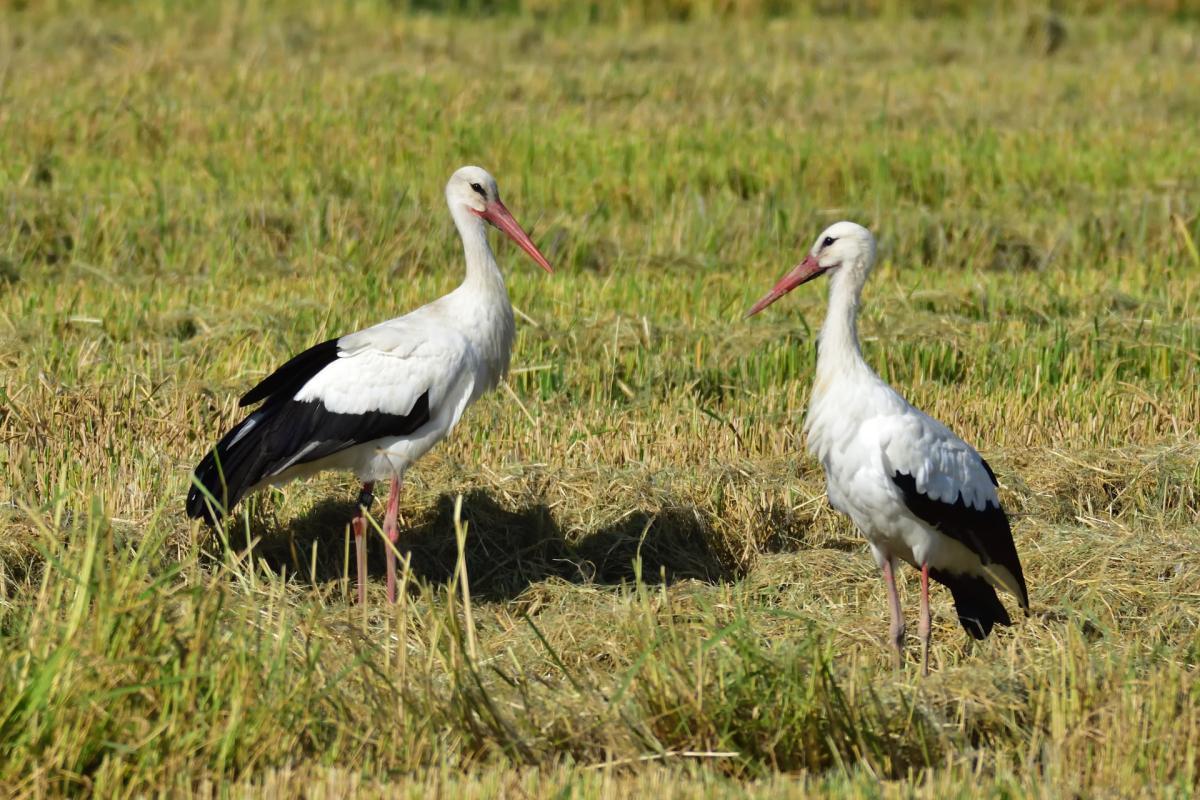
- Name: White stork
- Scientific name: Ciconia ciconia
- Conservation status:
The white stork is a large species of bird native to southwestern and eastern Europe, as well as the Middle East and Central Asia, and migrating to sub-Saharan Africa, the Arabian Peninsula, and the Indian subcontinent in the winter.
While it pretty rarely migrates to the country, a pair bred in the United Kingdom in 2020, for the first time in more than 600 years! This was part of an introduction initiative known as the White Stork Project.
30. Pelican eel
- Name: Pelican eel
- Scientific name: Eurypharynx pelecanoides
- Conservation status:
The pelican eel is truly a marvelous and intriguing creature that you might have never heard of. Also known as the pelican gulper, the umbrella-mouth gulper, or the gulper eel, it is a species of deep-sea eel with a very large mouth, resembling that of a pelican, hence its name.
In order to survive in such a harsh environment, the pelican eel has adapted and is an active hunter that can swallow and digest large prey.
31. Copper shark
- Name: Copper shark
- Scientific name: Carcharhinus brachyurus
- Conservation status:
The copper shark is another species of shark found around the waters of the United Kingdom. Also known as the narrowtooth shark or the bronze whaler, it is a species of requiem shark, the most widely-known group of sharks.
The range of this shark is not quite defined, and it could be found in many more areas than we could think. For now, it was confirmed around the United Kingdom, but also in the Gulf of Mexico and the Mediterranean Sea.
32. Northern gannet
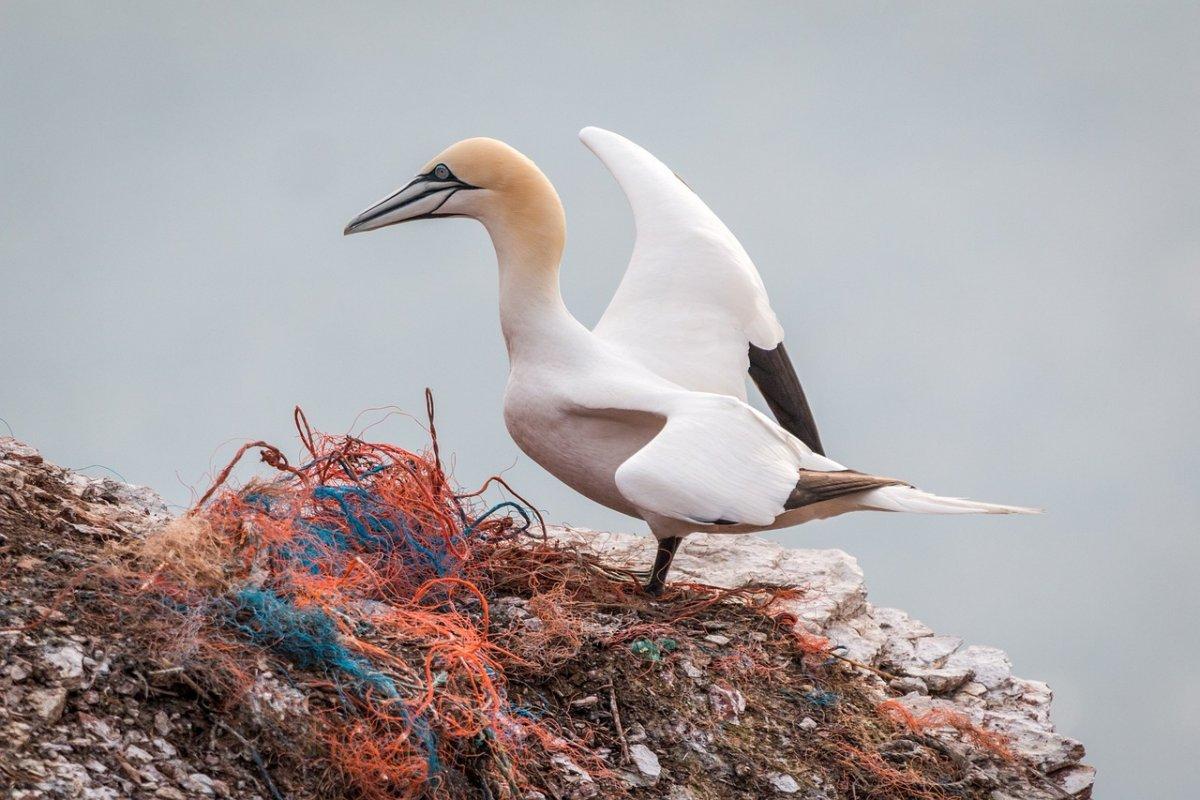
- Name: Northern gannet
- Scientific name: Morus bassanus
- Conservation status:
The northern gannet is a species of seabird native to the coastlines of the Atlantic Ocean, and it breeds in northeastern North America and western Europe. It nests in colonies, with the largest one being at Bass Rock in Scotland; it comprises about 75,000 pairs.
In some parts of its range, the northern gannet used to be hunted for its food, and it was referred to in ancient legends and myths.
33. European shag
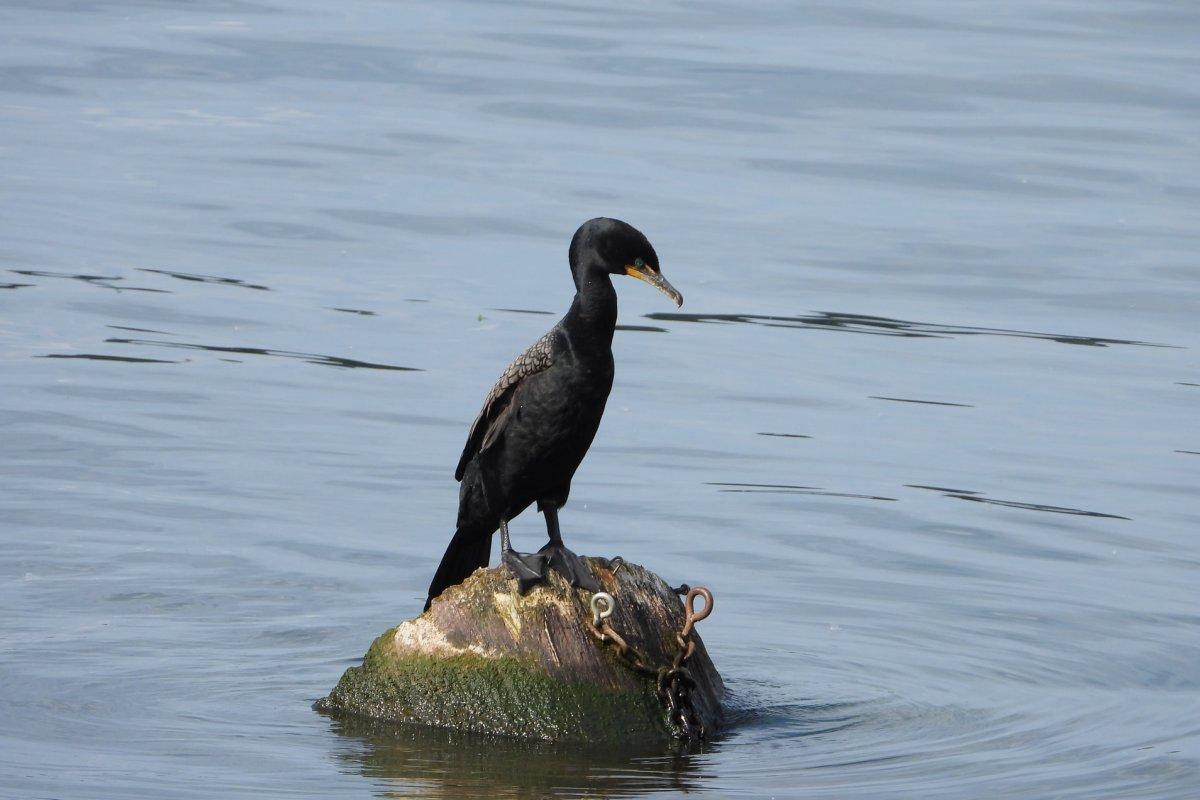
- Name: European shag
- Scientific name: Gulosus aristotelis
- Conservation status:
The European shag, also known as the common shag or simply as the shag in the United Kingdom, is a medium-sized species of cormorant native to the coastlines of the Mediterranean Sea, northwestern Africa, and northwestern and northern Europe.
This bird is a pursuit-diving feeder which eats fish. Its largest colony is located in Spain, in the Cíes Islands, and there are about 2,500 pairs there, which is equivalent to a quarter of the world’s population.
34. Great egret
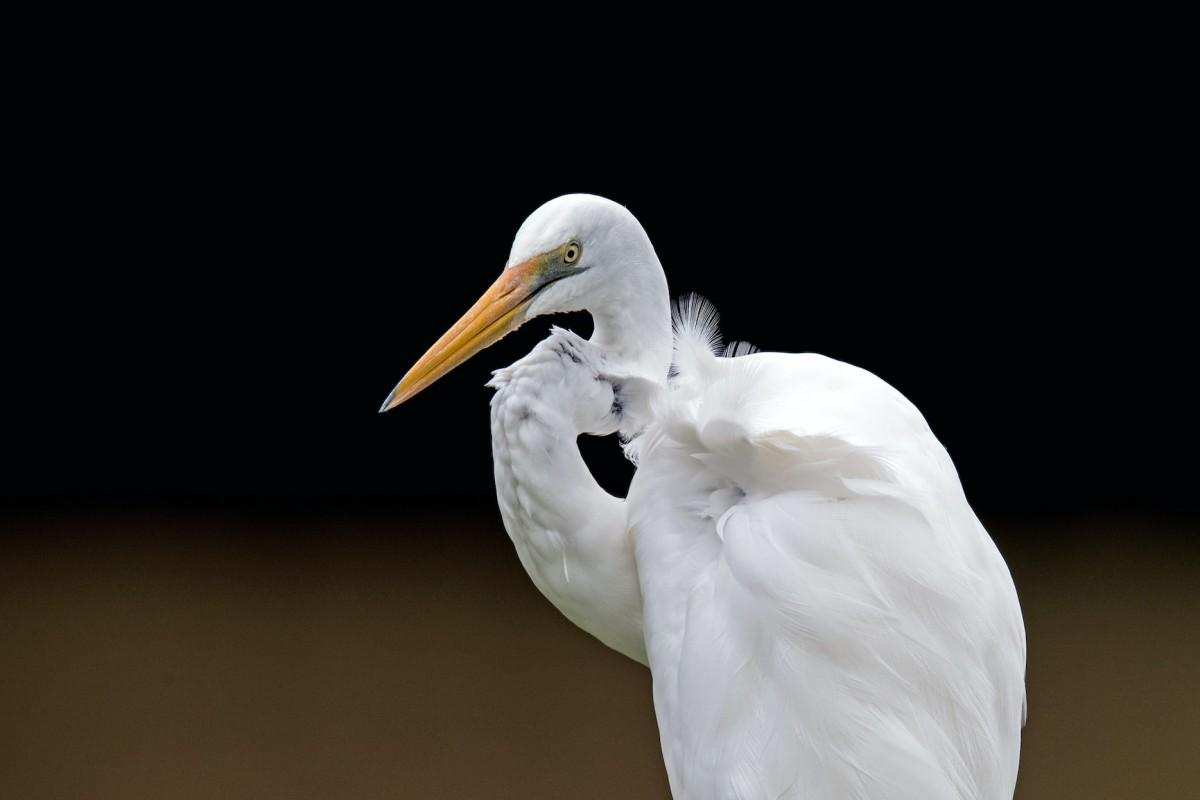
- Name: Great egret
- Scientific name: Ardea alba
- Conservation status:
The great egret, also known as the great white egret, the large egret, or the great white heron, is a large species of egret native to Europe, Africa, and the Americas, with 4 subspecies depending on the location.
This bird usually seeks food in shallow waters and drier habitats and primarily eats small mammals, frogs, and fish, but also crustaceans, insects, and small reptiles.
35. European water vole
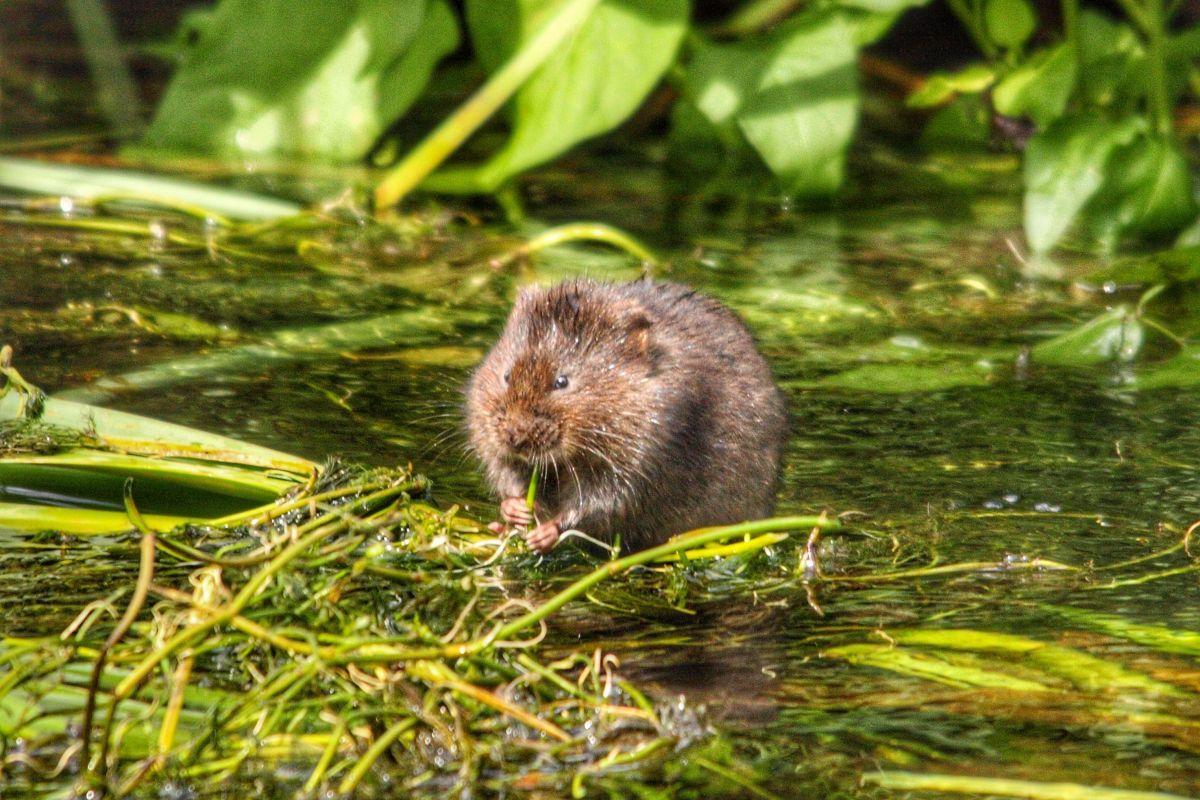
- Name: European water vole
- Scientific name: Arvicola amphibius
- Conservation status:
The European water vole, also known as the northern water vole or informally as the water rat, is a species of semi-aquatic rodent native to Europe, Russia, Kazakhstan, and western Asia. It only lives for about 5 months, but can reach up to 2.5 years in captivity.
In Britain, the European water vole lives in burrows near the banks of rivers, streams, ditches, and ponds.
36. Swordfish
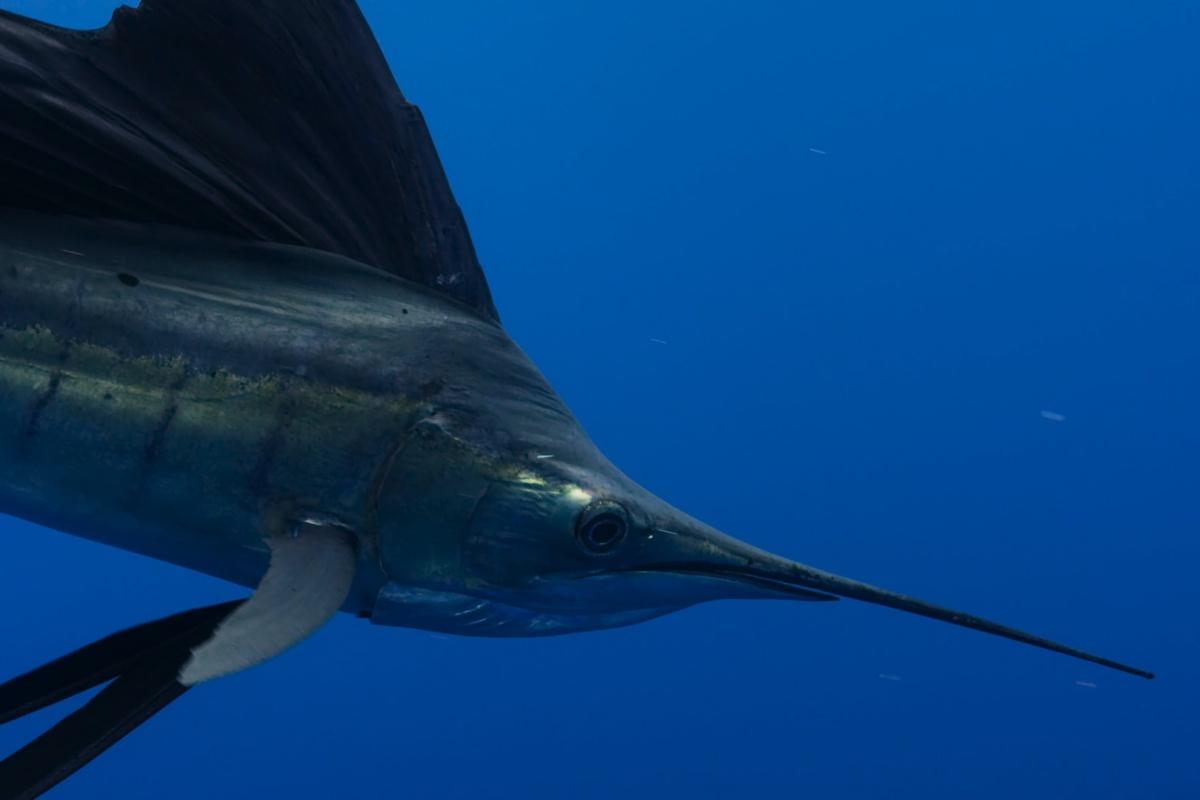
- Name: Swordfish
- Scientific name: Xiphias gladius
- Conservation status:
The swordfish, also known as the broadbill, is a large species of predatory fish, known for its very long, flat bill. Although it is a very popular sport fish, it is pretty elusive and difficult to find.
This fish inhabits much of the world’s oceans, from temperate to tropical waters, and can be found as far North as Scandinavia and Alaska.
37. Hen harrier
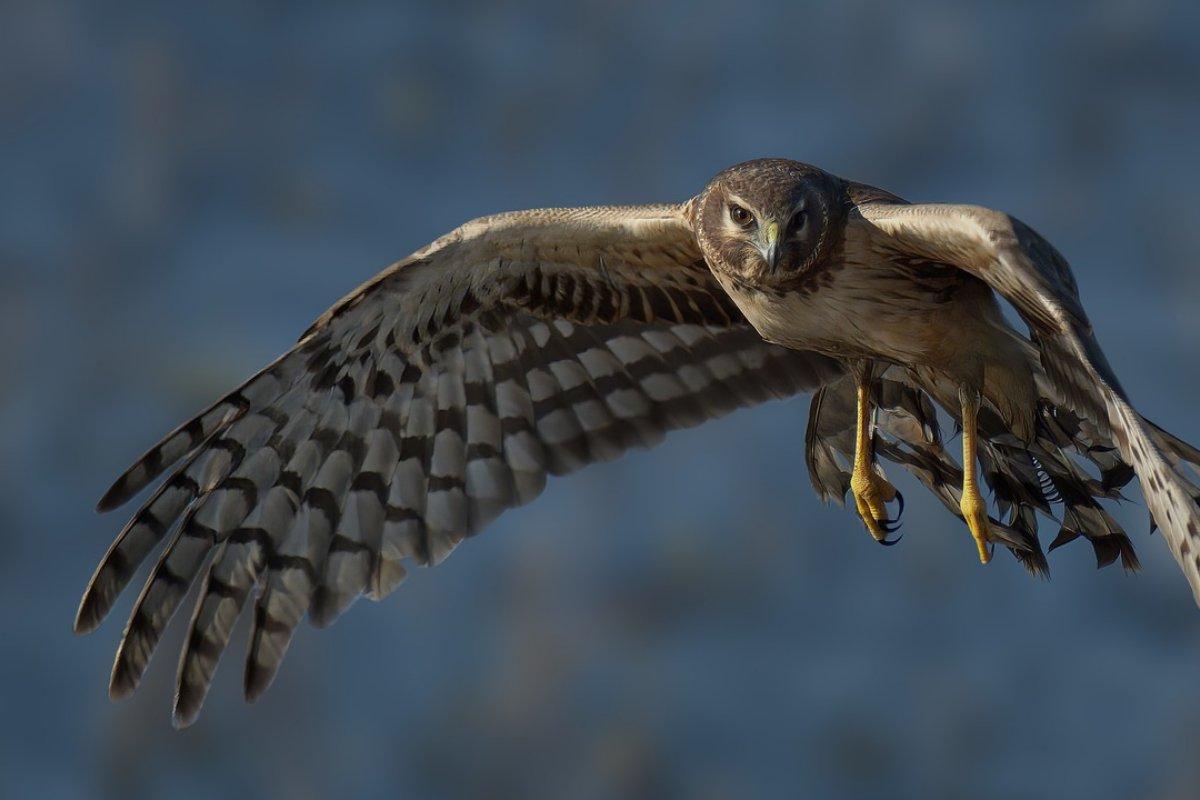
- Name: Hen harrier
- Scientific name: Circus cyaneus
- Conservation status:
The hen harrier is a species of bird of prey native to Eurasia and migrating to warmer areas in the winter. In the United Kingdom, some specimens are resident, while others (the ones living far in the North) migrate.
Interestingly enough, in some areas of Europe, seeing a hen harrier was supposed to be an omen that 3 people would die soon.
38. Harbor porpoise
- Name: Harbor porpoise
- Scientific name: Phocoena phocoena
- Conservation status:
While it is overall considered of least concern, the harbor porpoise suffers a lot in Europe, where it is listed as vulnerable to extinction. Its main threats are overfishing, interactions with fisheries, pollution, climate change, and noise pollution.
Because of its proximity to coastal, shallow waters, as its name implies, the harbor porpoise is the most familiar porpoise to whale watchers.
39. Long-eared owl
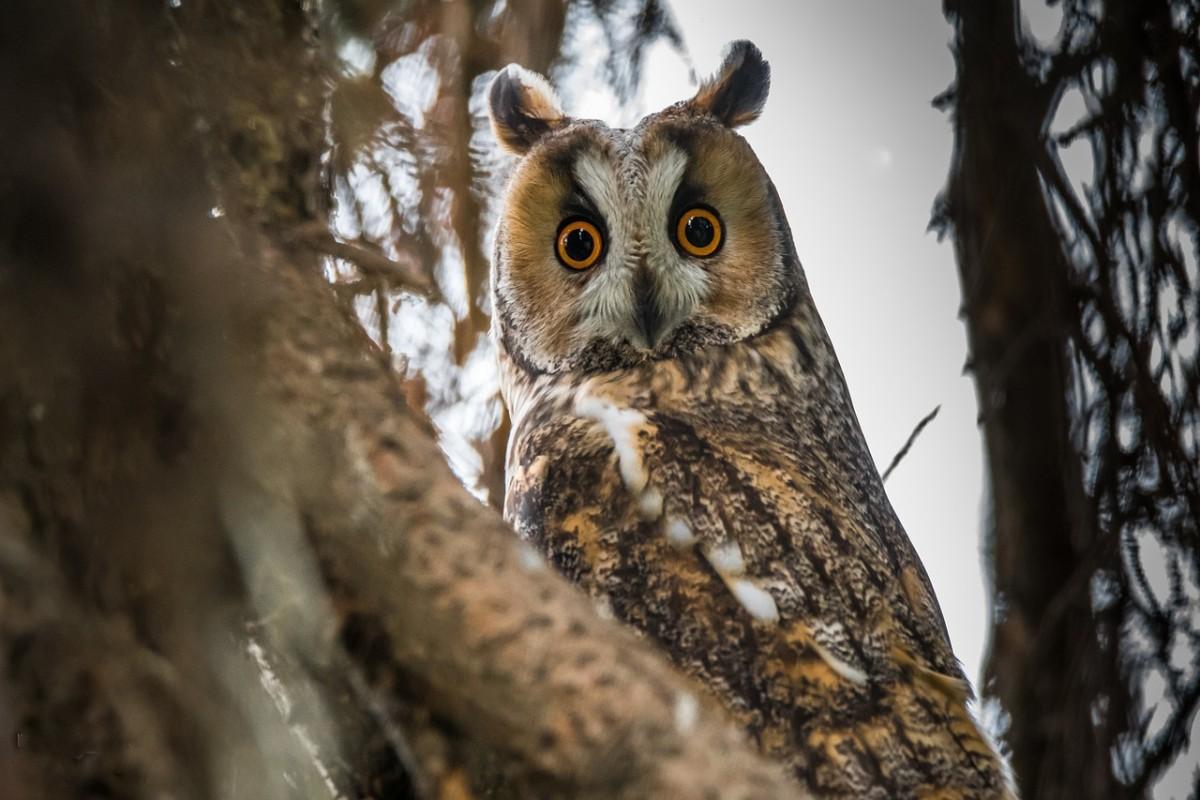
- Name: Long-eared owl
- Scientific name: Asio otus
- Conservation status:
The long-eared owl, also known as the lesser horned owl, the cat owl, or the northern long-eared owl, is a medium-sized species of owl native to much of the Northern Hemisphere, from North America to extreme eastern Asia. It sometimes migrates to warm areas in the winter but is mostly a resident bird in the United Kingdom.
This owl almost exclusively relies on small mammals such as rodents in order to subsist.
40. Great white shark
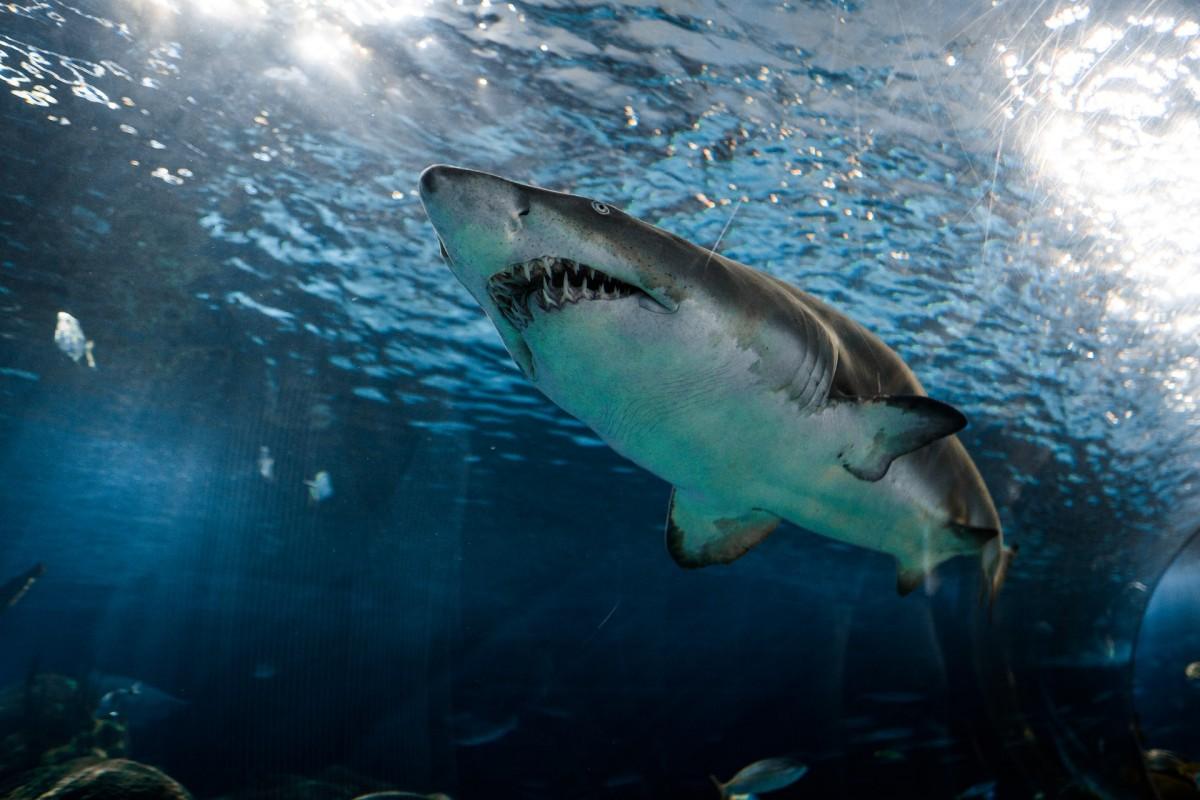
- Name: Great white shark
- Scientific name: Carcharodon carcharias
- Conservation status:
What way to end this list! The great white shark, also known as the white shark, the white pointer, or the great white, is arguably the most terrifying and widely-known species of shark. It is known for its size, reaching up to 6.1 m / 20 ft in length and 2,268 kg / 5,000 lb in weight!
This shark is an apex predator and does not fear anything but humans, who are obviously the main cause of its decline. No aquarium in the world hosts a great white shark, as it needs very long distances to travel and a very demanding and specific diet.
—
So there you have them, these were my 40 wild animals in Britain. I hope you enjoyed this list and that you learned something new today.
In case you want to learn more about animals in the country, feel free to keep reading, as I still have lots of things to tell you about:
Endangered Animals of the United Kingdom
This is definitely the saddest part of the list, but it is very important to raise awareness. Because of this, let’s go through the list of endangered animals in the UK.
Here are the animals in danger of extinction in the United Kingdom.
- Great auk
- Houting
- European eel
- Balearic shearwater
- North Atlantic right whale
- Common blue skate
- Kemp’s ridley
- and 13 more…
- Common smoothhound
- Atlantic halibut
- Leafscale gulper shark
- Sei whale
- European rabbit
- and 15 more…
To see the full list of endangered species in the United Kingdom, head over to the International Union for Conservation of Nature’s Red List.
What is the National Animal of the United Kingdom?
The national animals of the United Kingdom are the lion and the bulldog.
Yes, the United Kingdom has 2 national animals! In fact, it becomes even more complex if you look at each member state: for England, it’s the lion, for Wales, the red dragon, for Scotland, the unicorn, and for Northern Ireland… there is none. But let’s keep this about the United Kingdom as a whole!
The lion is a well-known symbol of might, pride, dignity, and bravery: it is featured on the country’s coat of arms, alongside a unicorn. As for the bulldog, it is a pure British dog breed (in fact, it is also called the British bulldog or the English bulldog), and is thus also a national pride.

How Many Animals Native to the UK?
What is the diversity of native animals in the United Kingdom?
Let’s look at the total number of species of Chordata (mammals, birds, fishes, and reptiles).
Total number of animal species in the United Kingdom: 1,269 (3,149 in total in Europe)
More About Animals in the World!
Loved these facts about the wild animals in Great Britain? Want to see what animals live in other countries?
Then check out these posts:
- Wild Animals in Scotland
- Wild Animals in Northern Ireland
- Wild Animals in England
- Wild Animals in Wales
Or click here to see ALL the facts up on the blog! Spoiler alert: there’s A LOT of them.
Share the knowledge! Click on the buttons below to share information about these famous wild animals of Britain with your friends, and help them learn more about the world 🙂
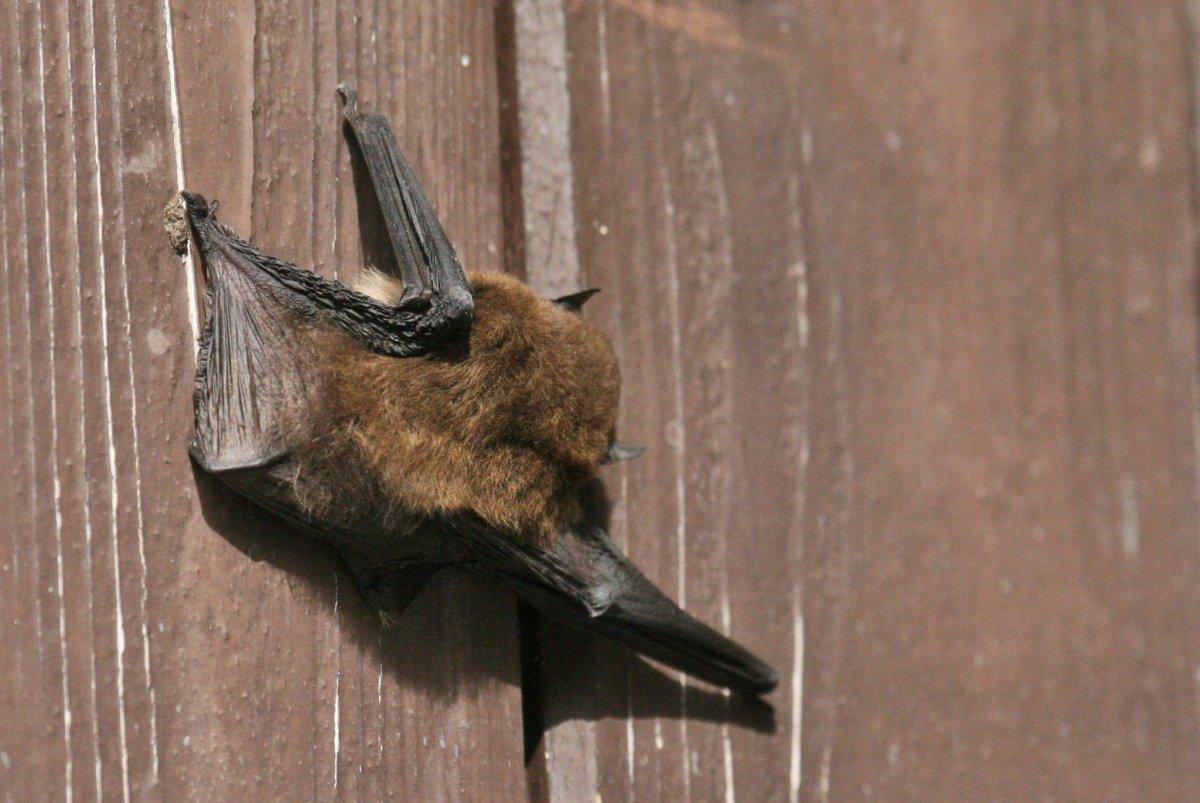
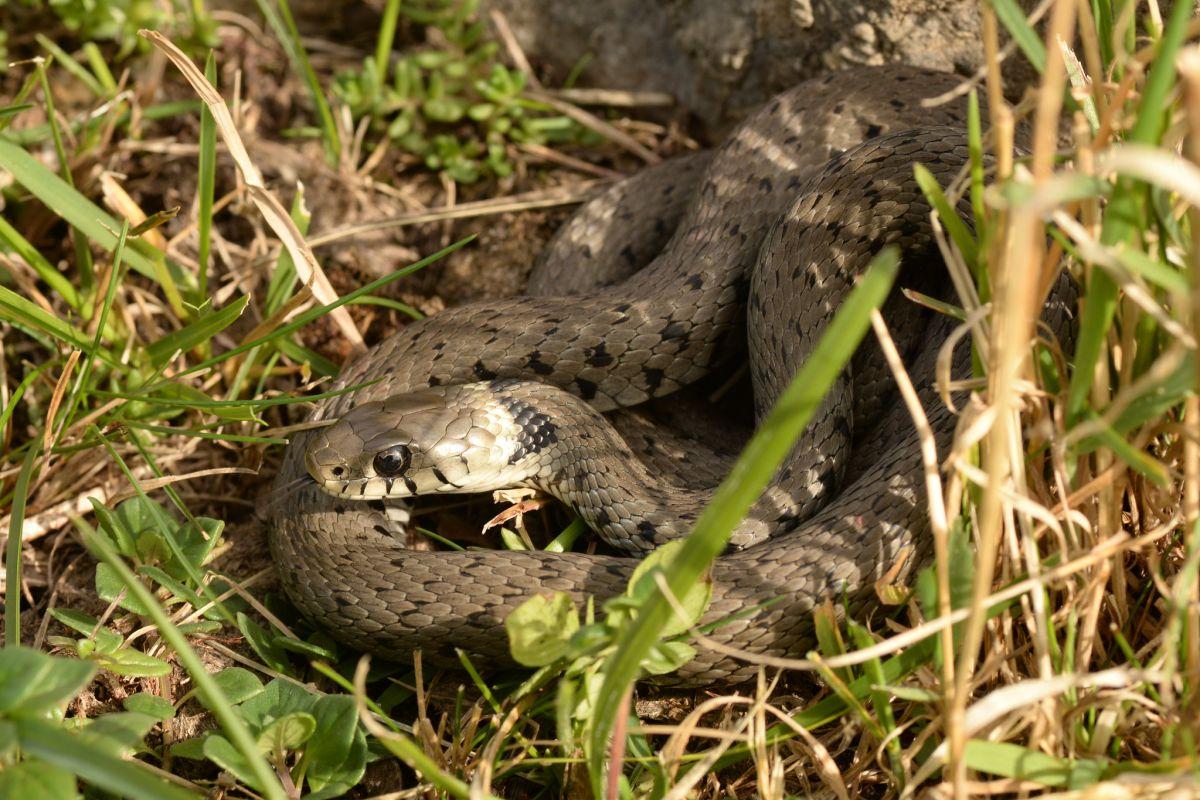
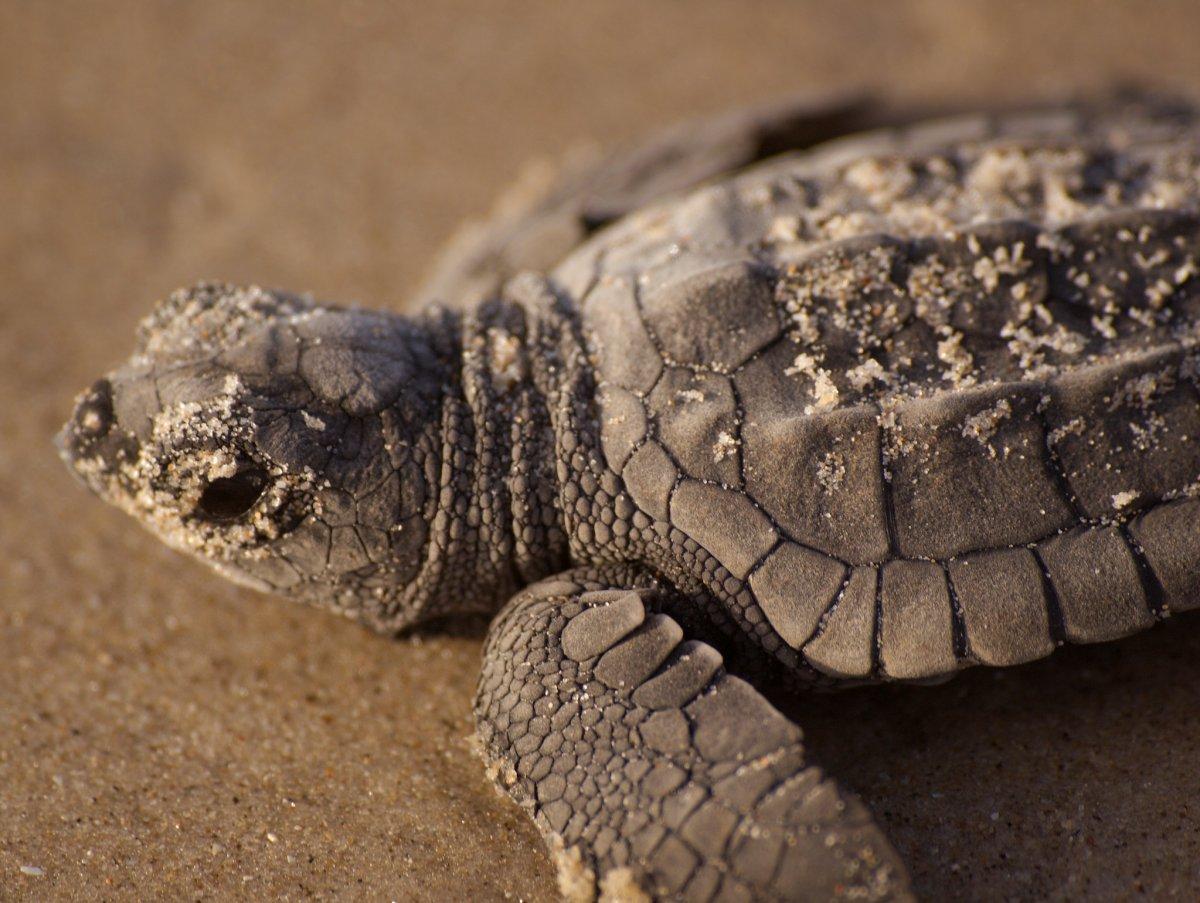
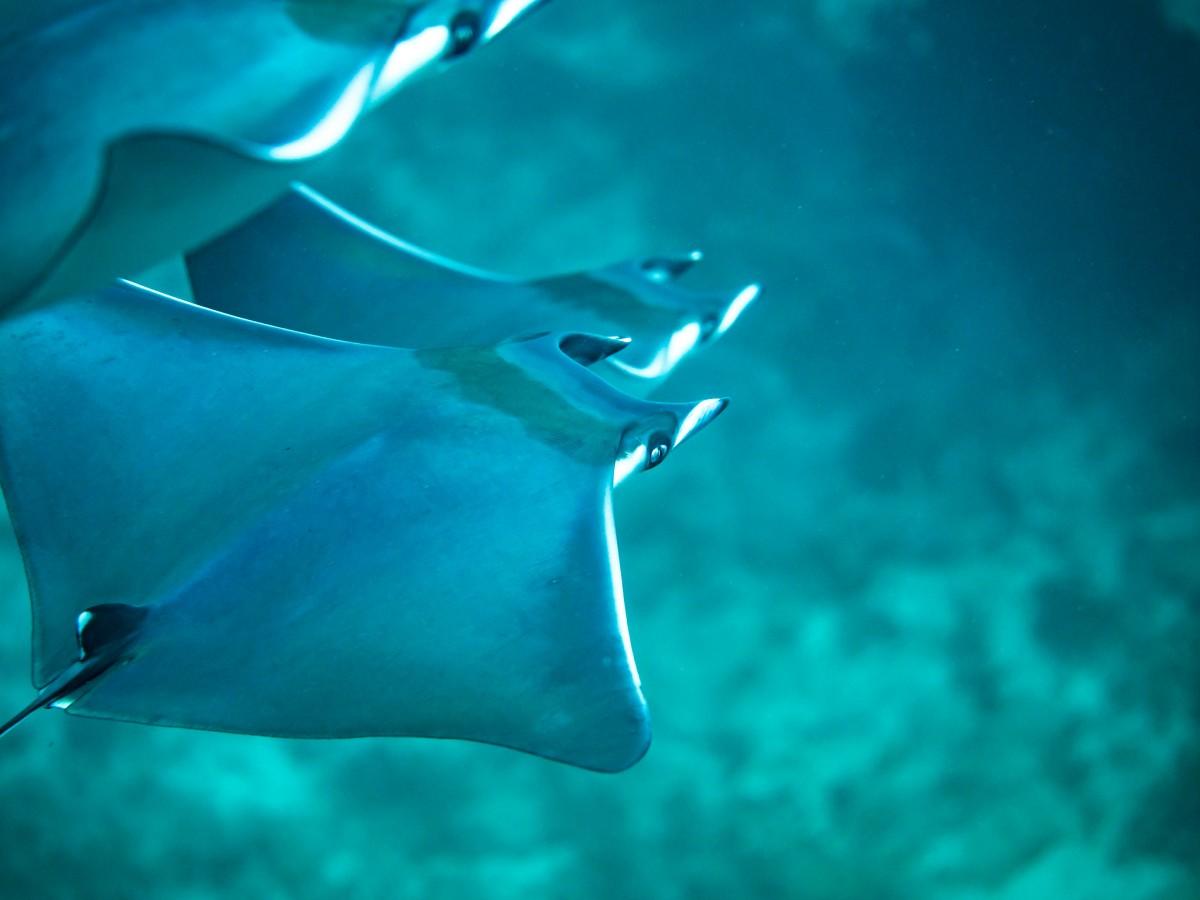
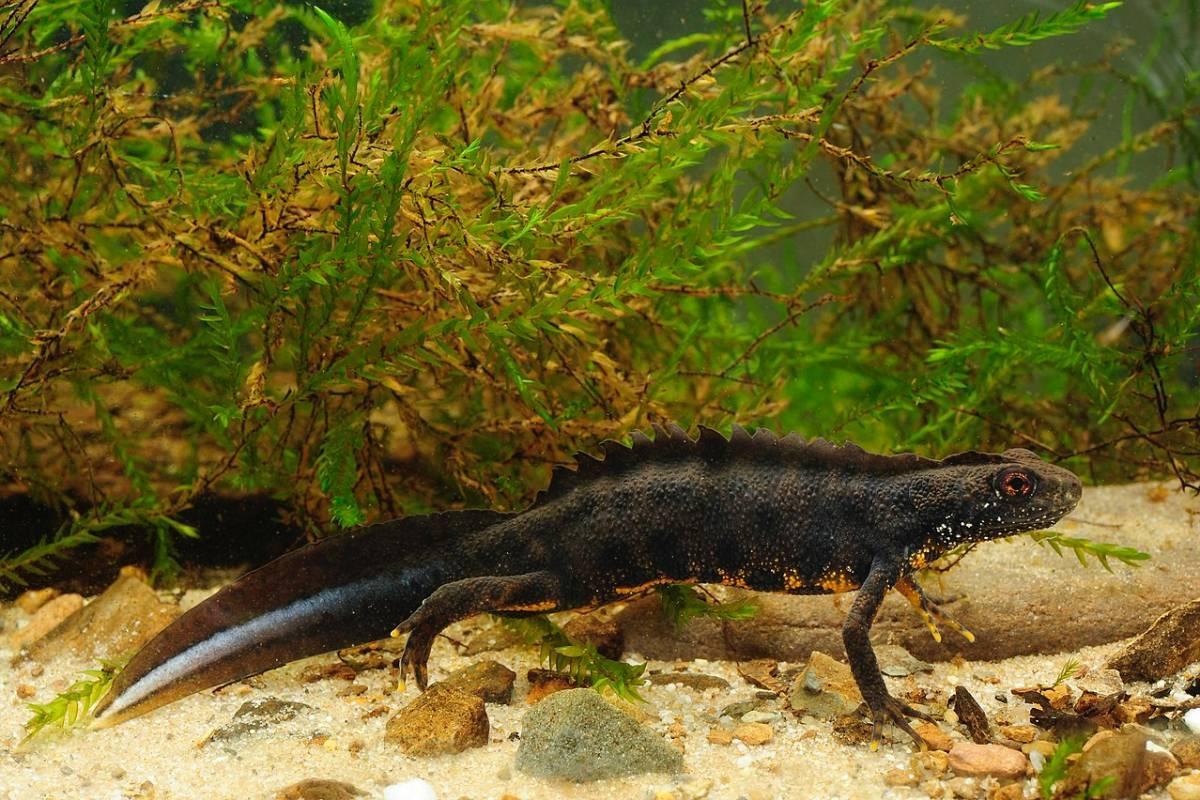
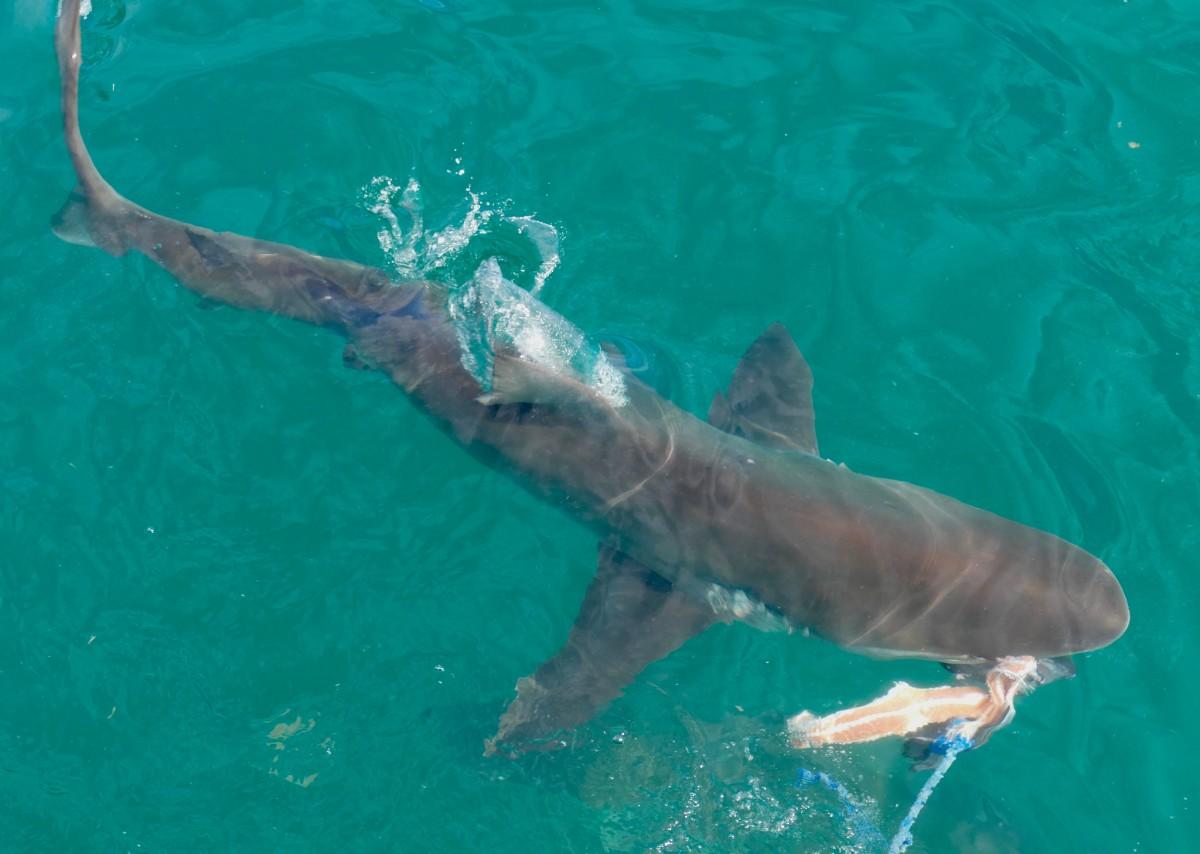
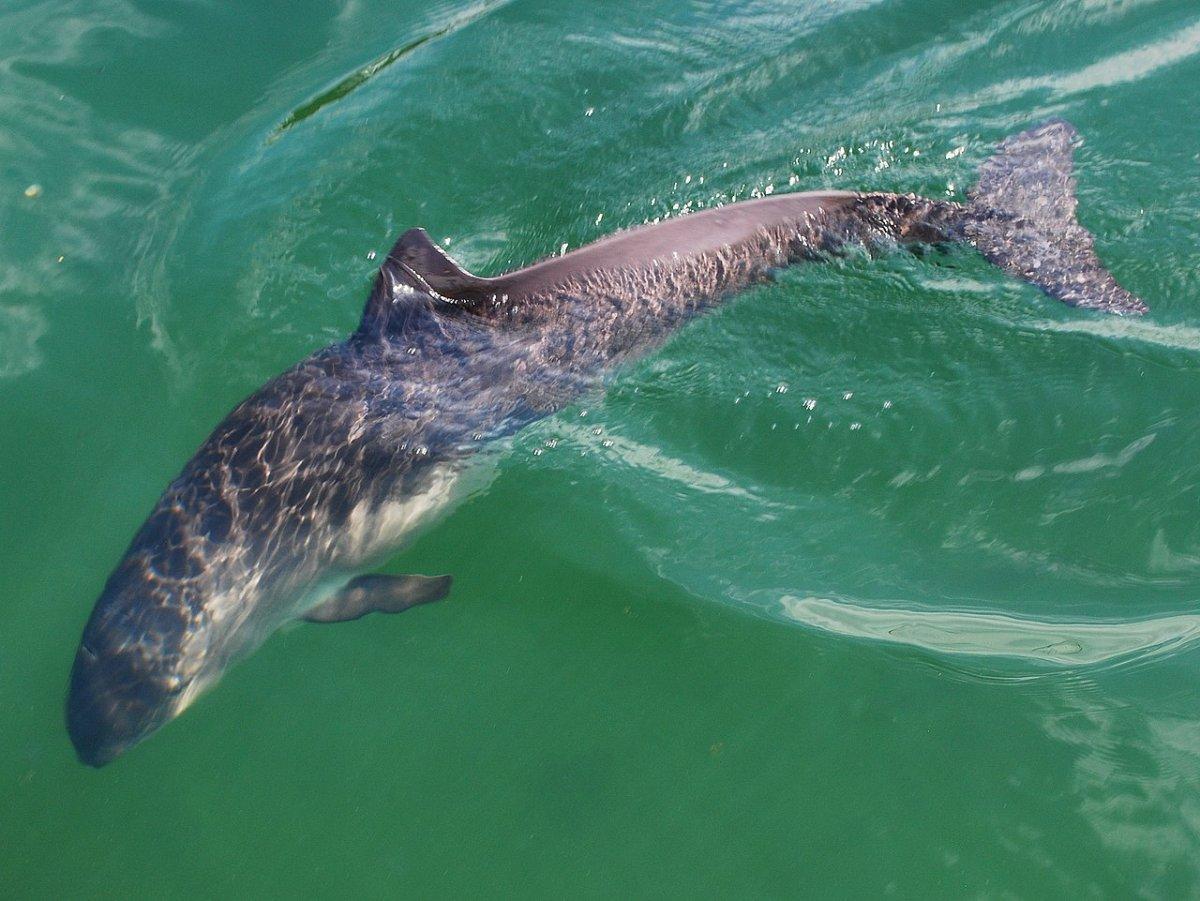

![21 Wild Animals in Indonesia [Wildlife in Indonesia]](https://www.kevmrc.com/wp-content/uploads/2022/12/21-wild-animals-in-indonesia.jpg)
![10 Wild Animals in Sudan [Wildlife in Sudan]](https://www.kevmrc.com/wp-content/uploads/2022/12/10-wild-animals-in-sudan.jpg)
![14 Wild Animals in Cameroon [Wildlife in Cameroon]](https://www.kevmrc.com/wp-content/uploads/2022/12/14-wild-animals-in-cameroon.jpg)